Is the hustle and bustle of Mexico City tiring you out? Relax, because Puebla is the perfect weekend escape for families with kids. Just two hours from the nation’s capital, Puebla’s rich colonial heritage and relaxed atmosphere make the city center a delight for exploring on foot.
Of course, Puebla’s biggest claim to fame is its status as the site of what was arguably Mexico’s most enduring military victory. Locals are staunchly proud of the 1862 Battle of Puebla, when the Mexican army defeated French occupation forces.
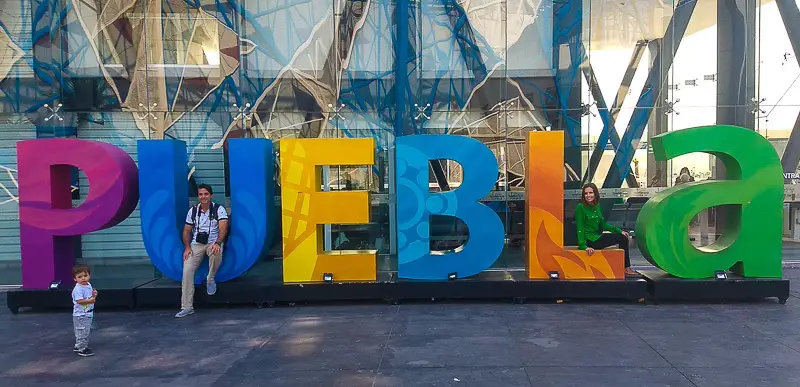
Puebla's Colonial Center
The logical starting point for exploring Puebla has to be the zocalo. Located in the heart of the historic downtown, the zocalo was granted UNESCO world heritage status in 1987. It’s ringed by coffee shops, and makes for a good spot for people watching.
Of course, the real gem here is the Puebla Cathedral. Taking almost a century to build, the cathedral boasts Mexico’s tallest bell towers. Climbing them offers some good views of the city, but the highlight of the cathedral is its decadent interior.
The dimly-lit cathedral interior is a dense jungle of gold, Renaissance-era art and glimmering décor. Even the kids will be impressed by this sensory overload.
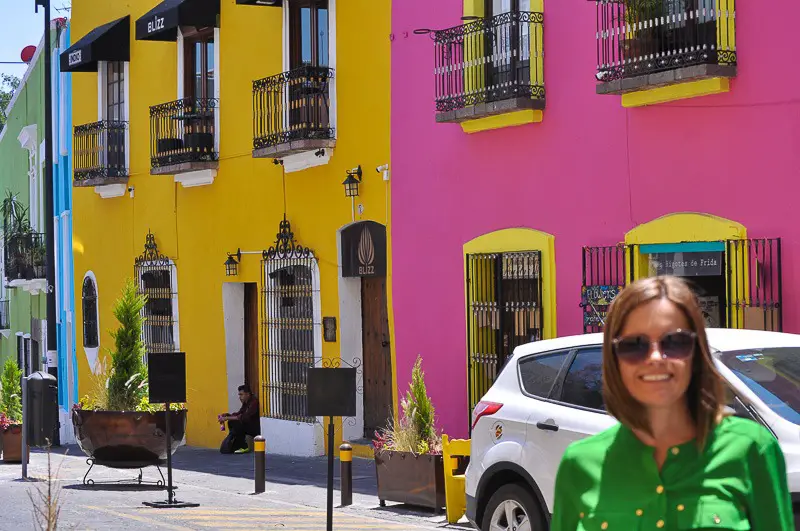




A street in Puebla's Barrio de los Artistas
Once you’ve had your mind blown by the cathedral, it’s time to hunt down the colonial center’s other gems. Bear in mind that much of the colonial center can be a bit of a challenge with strollers.
While the immediate streets around the zocalo are well-maintained, you’ll find the historic center is riddled with uneven paving and stretches of the dreaded stroller-killing cobblestones.
Unless your're visiting Puebla with a toddler do yourself a favor, and leave the stroller to live to fight another day.
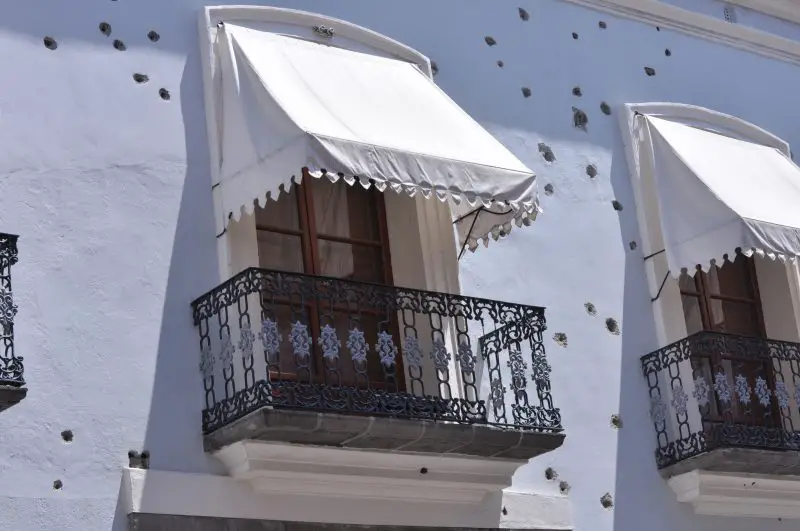




You've probably heard of the famous 5 de Mayo battle of Puebla. Well, it all started in this house, and those are real bullet holes.
With kids in sling, your next destination should be the Palafoxian Library. Just a block from the cathedral, this historic 18th Century library has quite the collection of leather-bound books.
Afterwards, keep heading south, then loop back around for Los Sapos. This art district isn’t much to look at during the week, but on Saturdays and Sundays morphs into a quirky flea market.
Keep heading north, then a few blocks past the zocalo you should see the artisan market on your right.
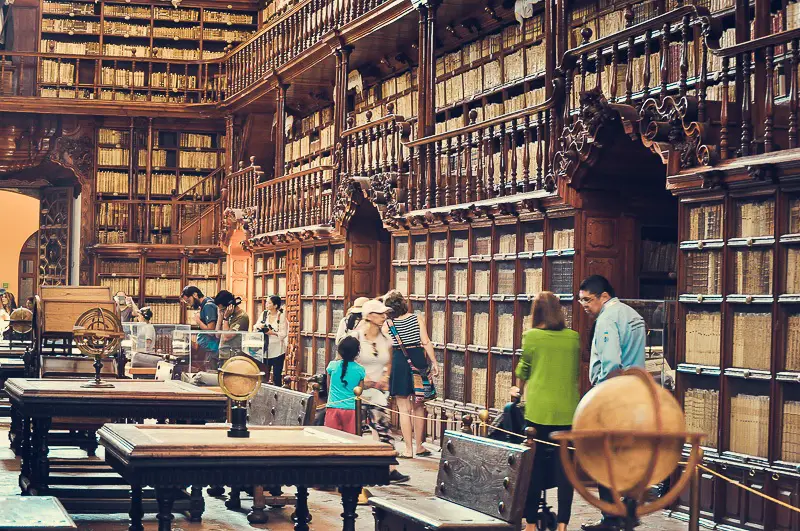




The Palafoxian library in Puebla. This was the first library in the Americas.
This small market is mostly geared towards tourists, but is good for picking up a few souvenirs. There’s also another stretch of markets further north in the Barrio de Artistas.
On weekends, local artists line the street with their easels. Further on, you’ll run into the Calle de los Dulces (Sweets Street). As its name would suggest, this is the spot for trying Puebla’s array of traditional sweets. Classic Poblano sweets tend to be outrageously sugary, and almost impossible to stop eating.
The small, disc-shaped tortitas de Santa Clara area local favorite. This street will no doubt be the highlight of the historic center for the kids, not to mention a good place to buy souvenirs.
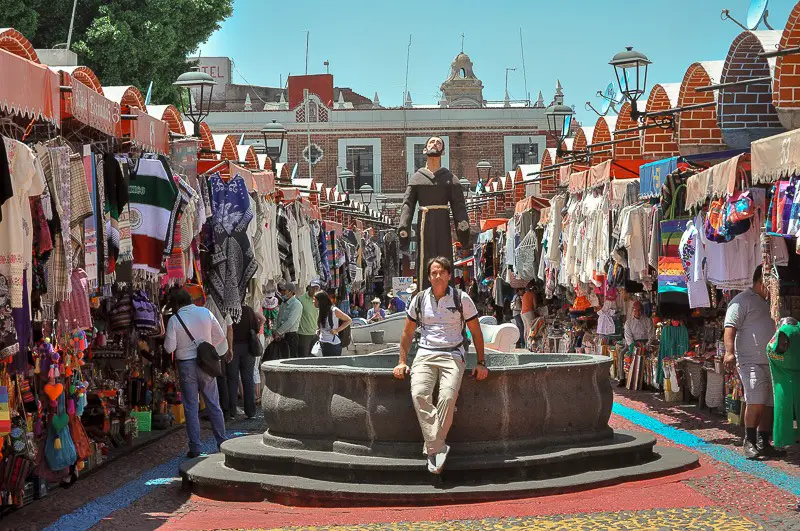




This is a good market where to buy your souvenirs- remember to bargain! The place is definitely aimed for tourists though.
At the end of Calle de los Dulces, you’ll hit Puebla’s main shopping drag, 5 de Mayo. This mall-esque street is mostly packed with clothing stores, but is also home to the Ex Convento de Santa Rosa.
This former convent and church is worth visiting for its ornate gold nave. Finally, hike to the far end of 5 de Mayo and cross the highway to reach the Barrio de Xanenetla, which is known for its colorful street art.
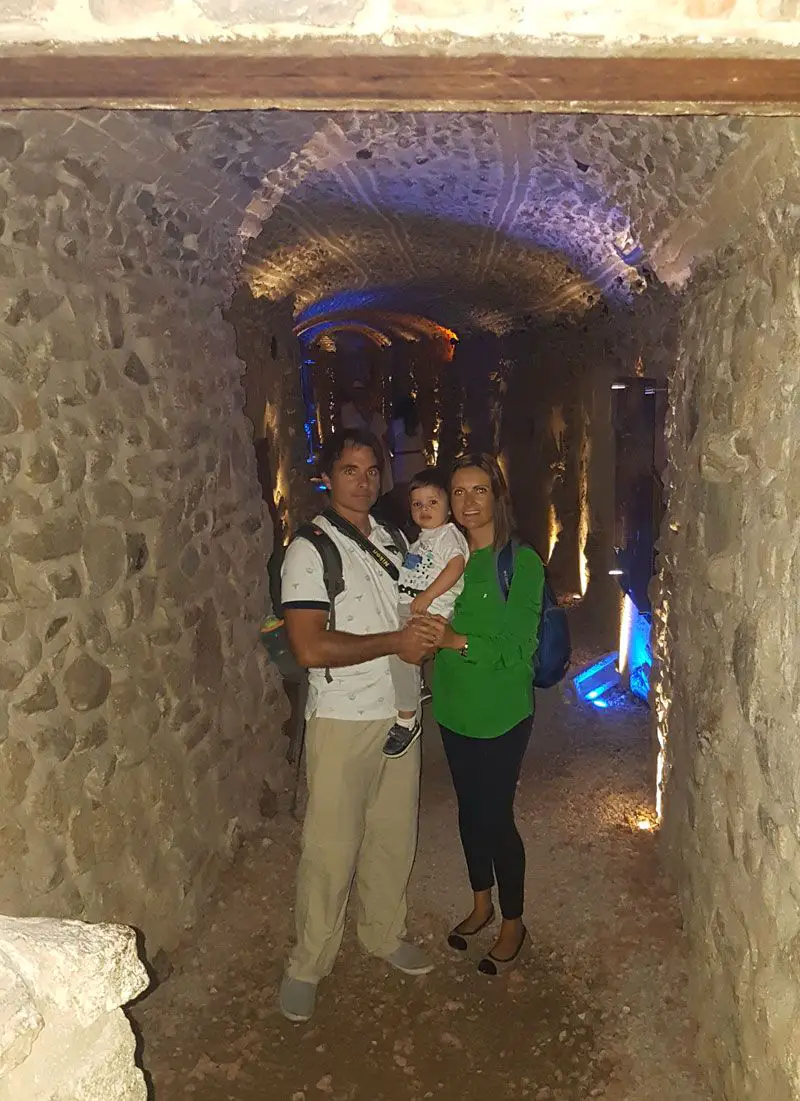




Exploring Puebla's underground tunnel system: secretos de Puebla.
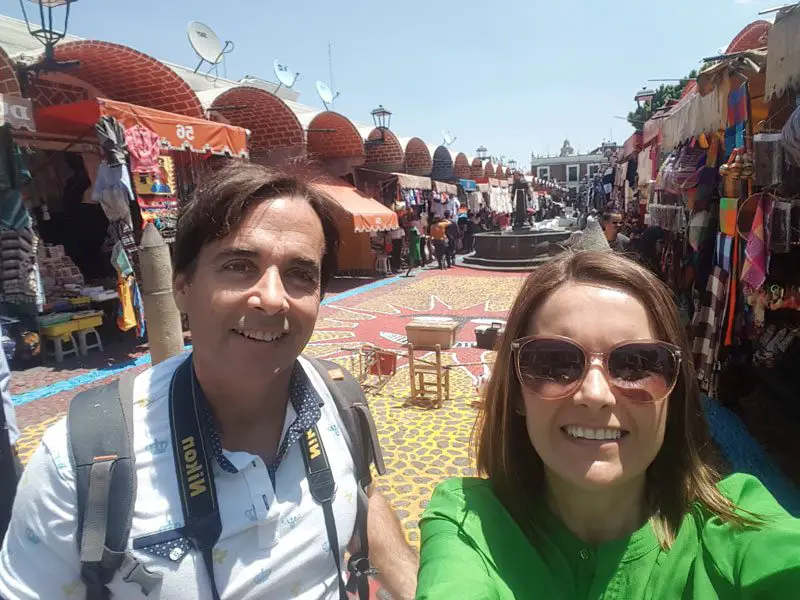




With more than 400 years of tradition Talavera potery is the most important handcraft in Puebla, and of all the shops Uriarte is the most popular. Here you can actually visit the mill and see how the full process of creating Talavera happens.
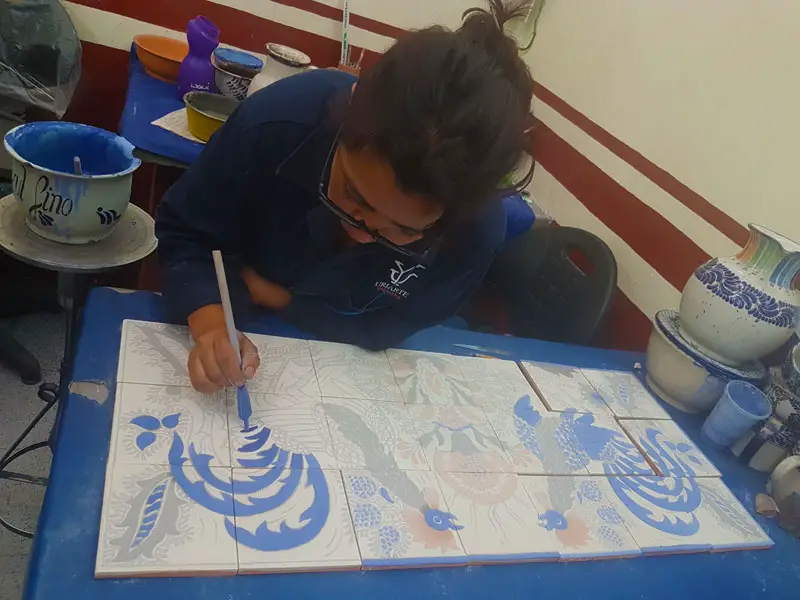




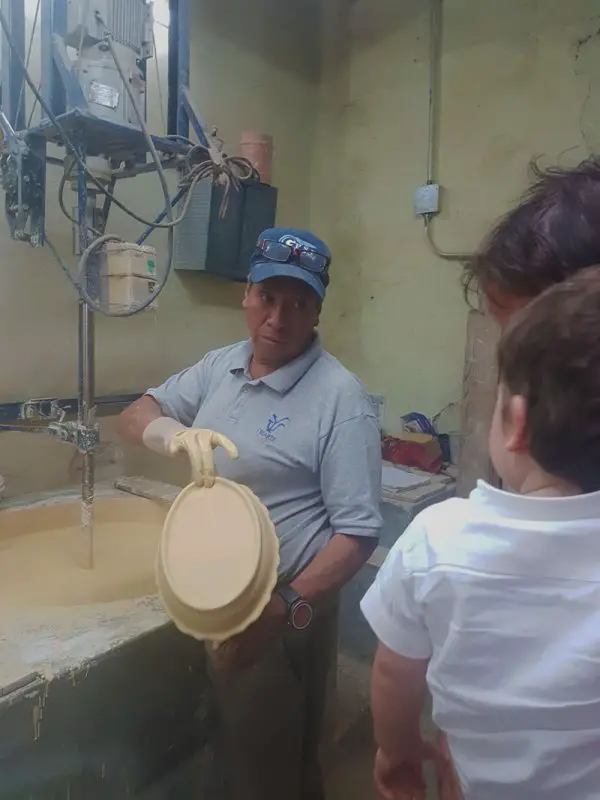




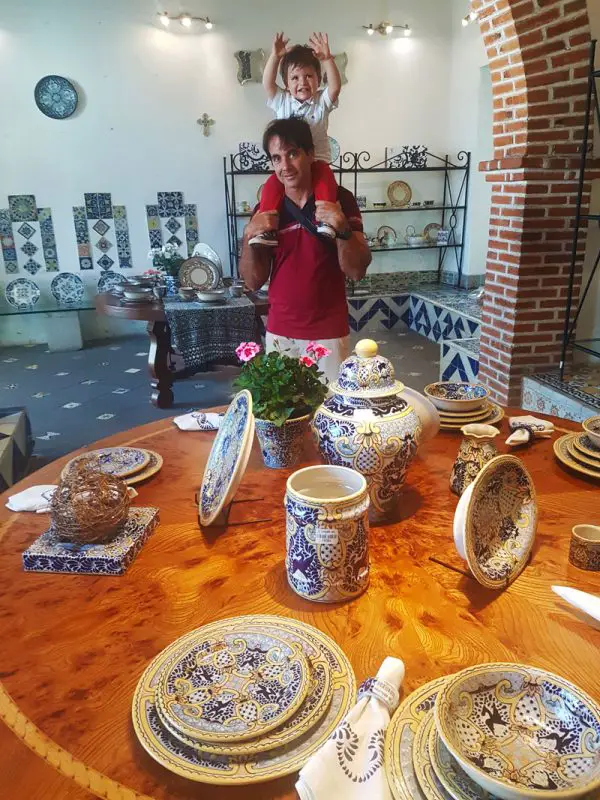




You can also visit Puebla's city center by joining a tour:
This 3 hour private walking tours with food sampling will take you around the Zocalo, important squares and vibrant neighborhoods. Book here
On the other, a Private half day tour with transportation will show you more of Puebla in less time, and pick up at your hotel is included. Book here
Outside the City Center
Los Fuertes
About 15 minutes by foot up the hilly road from Barrio de Xanenetla, you’ll arrive at Los Fuertes (The Forts). It’s best to hail a bus to avoid the steep climb, and there’s plenty of public transport.
Once you reach the top of the hill, you’ll understand why Los Fuertes was used as a defensive position for Mexican troops bracing for the Battle of Puebla in 1862.
It’s on this hill with its commanding views that the professional French army crashed against a ragtag group of poorly equipped Mexican defenders.
Despite the odds, the Mexican army managed to repel the French invaders, scoring a victory that is still celebrated today.
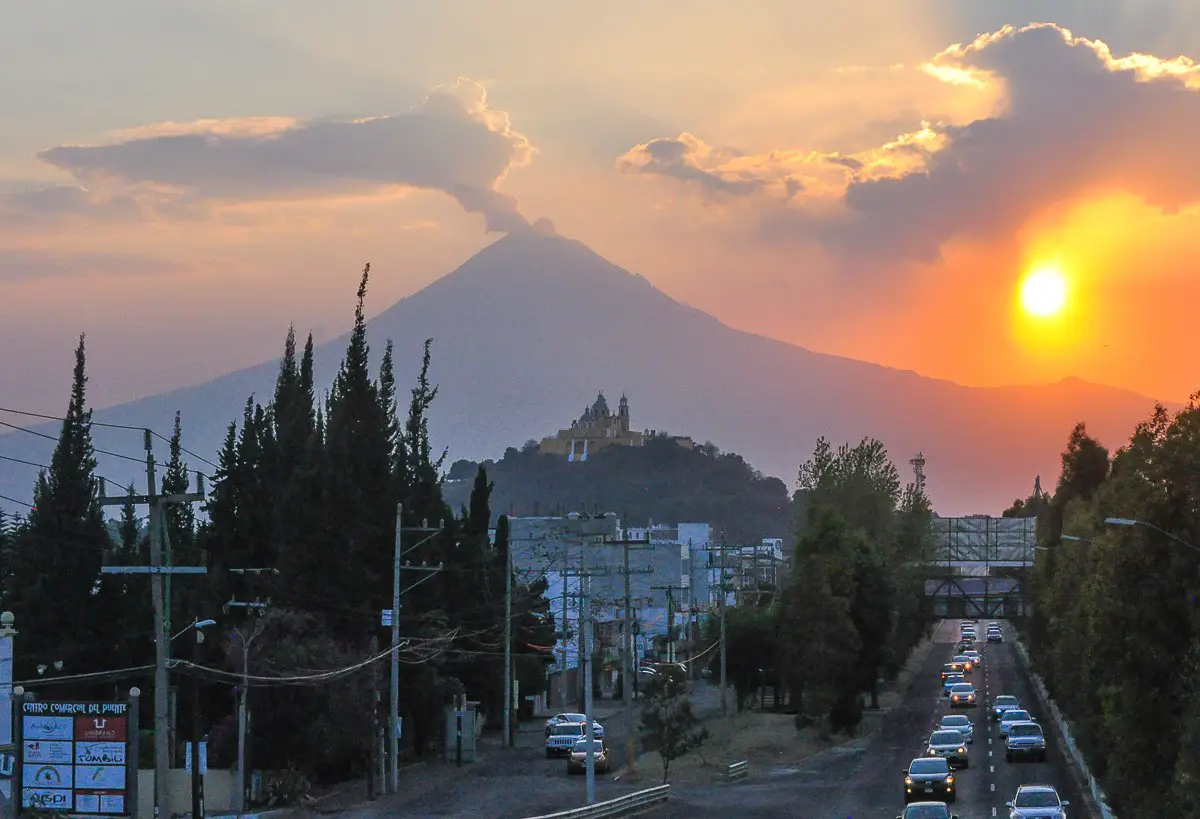




Fantastic view of Popocatepl volcano from a bridge in Puebla.
The former battlefield around Los Fuertes is now a a maze of gardens and walking trails packed with museums, most of which offer free entry on Sundays.
The Museo de la Evolución Puebla will be a hit among the kids, who will love gawking at the life-like displays of prehistoric animals, not to mention the gigantic shark at the entrance.
For a bit of history, don’t miss the INAH Museo Regional de Puebla, and the smaller Museo Interactivo De La Batalla Del 5 De Mayo.
The latter has a small but enthralling exhibition detailing the Battle of Puebla.
On the other side of the city center, on Calle 11, you’ll find Puebla’s Mercado de Sabores.
Cuexcomate - "the Smallest Volcano in the World"
This is a good spot to try mole, or just dig in to an ocean of chilaquiles. From here, it’s possible to catch a bus to the suburb of La Libertad. This neighborhood’s claim to fame is Cuexcomate. Dubbed the world’s smallest volcano, Cuexcomate is in fact an inactive geyser, but don’t let that disappoint you.
The geyser (or volcano, if you prefer) is apparently cursed. According to local lore, Cuexcomate was used by indigenous people to dump the bodies of suicide victims.
Today though, the interior of the geyser is more like a cave than a crypt. The kids in particular will enjoy this one.
Fabrica La Constancia
Ex Fabrica La Constancia is a former fabric mill that has become a museum- four of them actually.
The Paseo de los Gigantes will walk you through a maze of world famous landmarks that adults and kids will love to recognize.
There's a fantastic interactive children's museum, a museum about music from Viena and a traditional mexican puppet museum (Museo del Titere)as well.
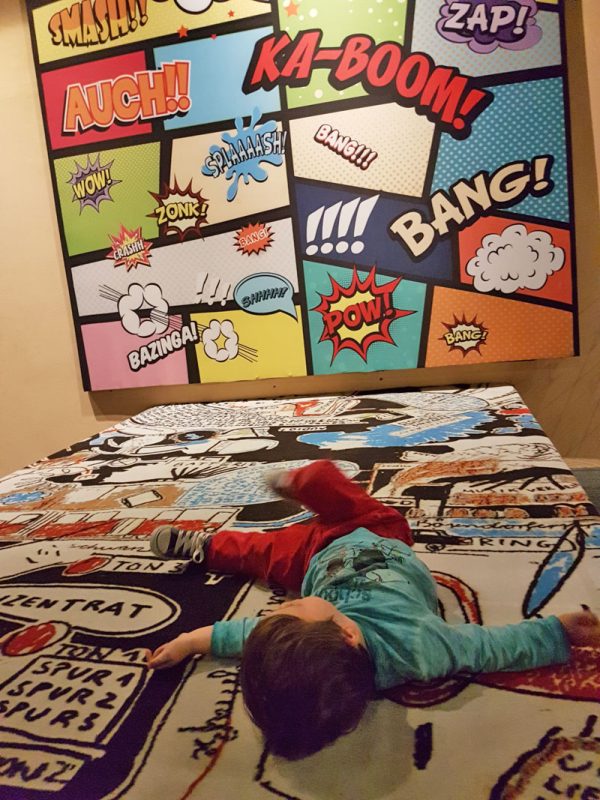




Teo having fun
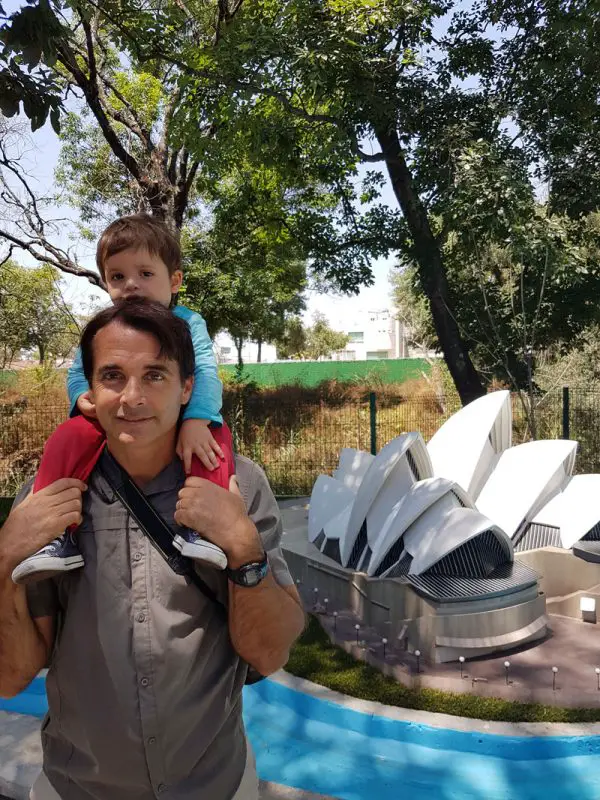




While Teo is to young to recognize any of the landmarks, we had fun naming all of them.
Estrella de Puebla
Puebla has its very own Ferris Wheel, called Estrella de Puebla, and it's a world record holder as well: it's the largest portable ferris wheel in the world.
There are two kinds of seats, standard and VIP. VIP cars have glass bottoms and more comfortable seats, and you'll skip the waiting line as well.
This said all cars have AC and offer great views of Puebla.
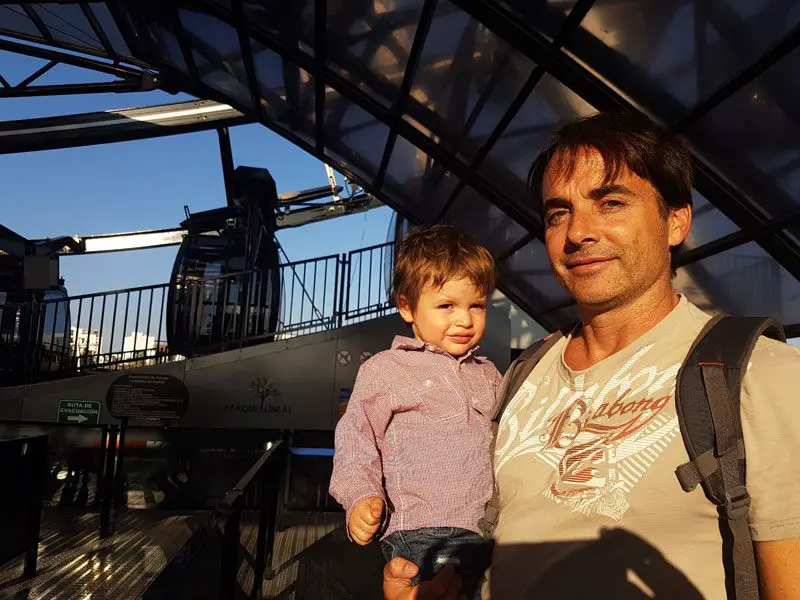




Waiting for our VIP car at the Estrella de Puebla
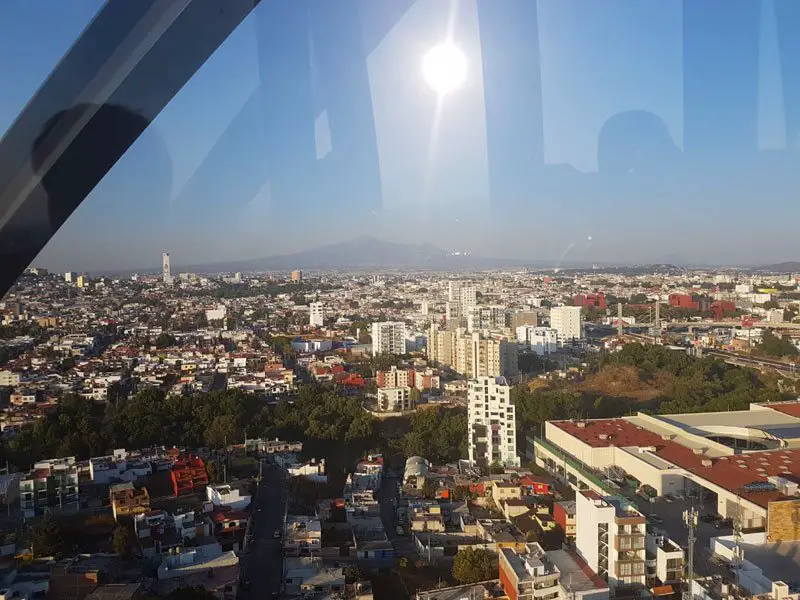




View from Estrella de Puebla, the ferris wheel in Puebla
Teleferico de Puebla
Puebla also has a cable car for those who like to views from above. It's not very long but is a good way of seeing the city from above and at a different angle than the cable car.
Search for Teleferico de Puebla online and you'll get all the info you need including price, schedule and more. It is very cheap by the way (30 MXN at time of writing).
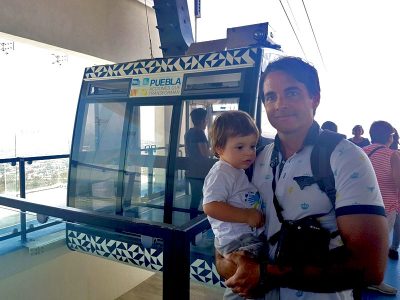




About to get into the cable car
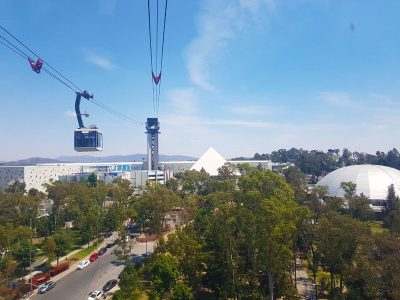




View from the cable car. It only has one section, taking you to the tower you see at the end.
Hop On/ Hop Off Bus
Like many cities in the world Puebla has its own hop on/ hop off bus. There are several companies, and during the day we decided to hop on a tour called Barrios Antiguos de Puebla, translated as " Puebla's Old Neighborhoods".
It lasts about two hours and is a convenient way of getting around the city as a first familiarization, or to wrap it up.
The tours start and ends at the zocalo, Puebla's main square.
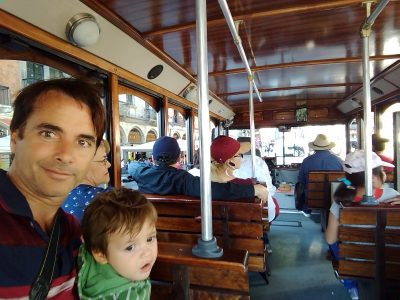




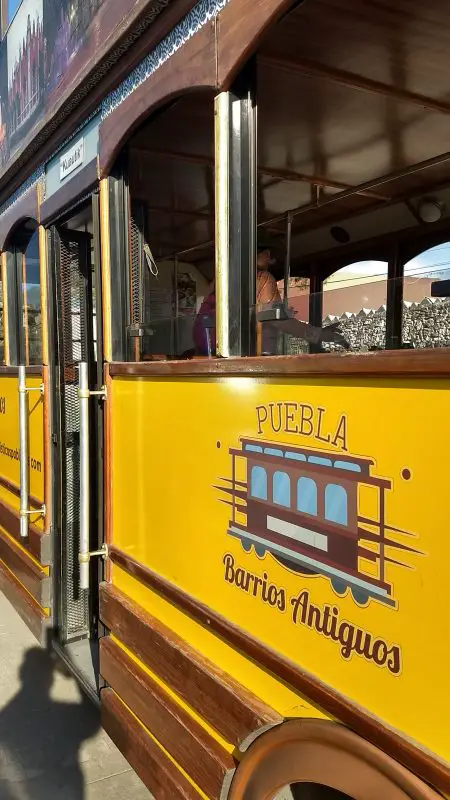




These hop on/ hop off buses are different than your standard red bus you find in most cities. Younger kids will love getting into them right from the beginning!
A sight seeing tour on a double-decker tram is a cheap and convenient way to get an overview of Puebla, specially during the hot summer days. Book here
There are also a few night tours available which offer you the chance to see Puebla once the sun is down. They all start at the zocalo, and last roughly around 2 hours.
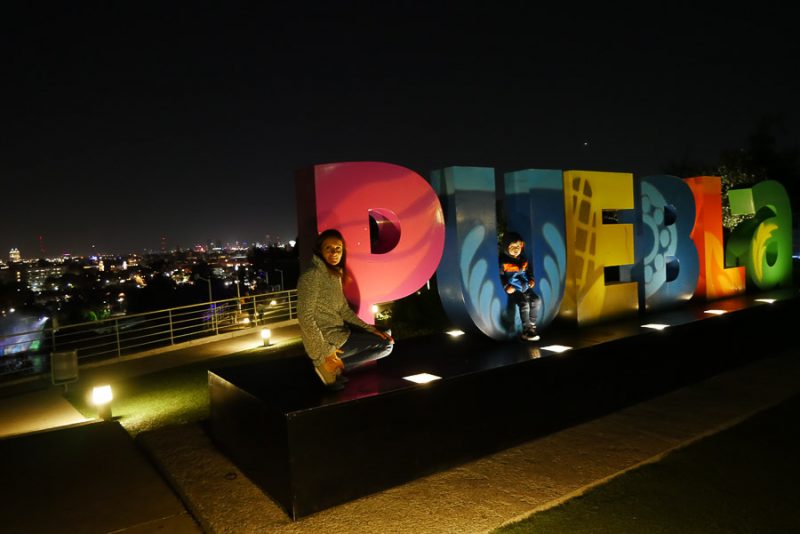

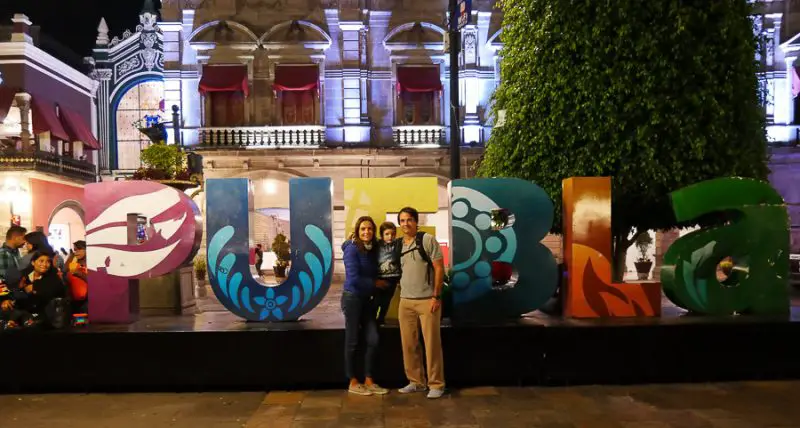

Museo Internacional del Barroco
Lastly, art buffs won’t want to miss the Museo Internacional del Barroco. This sleek, modern museum is located in the upmarket suburb of Angelopolis, but can be reached from the center by public transport.
Designed by Japanese architect Toyoo Ito, the museum was only just opened in 2016, and has some enthralling exhibitions on Baroque art.
Aquario Michin Puebla
This new and modern aquarium opened it's doors to the public on December 2019 and provides great entertainment for young kids and families. The aquarium has over 20,000 animals in their ecosystems including fish, turtles, snakes, stingrays...and goats (??).
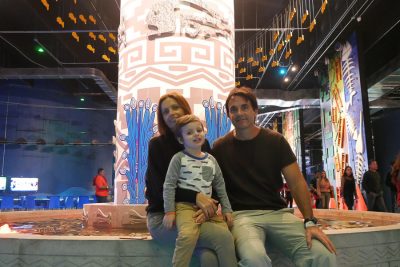

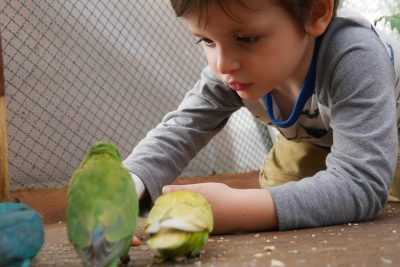

Tickets start at 199 MXN per person over 1 year old, as there are several options. The aquarium also offers activities that many young kids will love (and parents too as the little ones will blow off steam in them) including trampolines, indoor zip-lining and skating among others, and your price will depend on what you want to do.
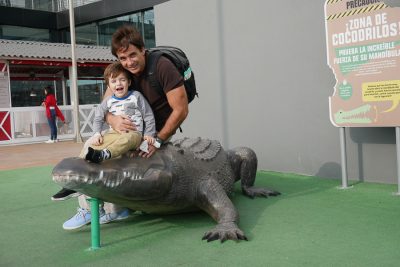

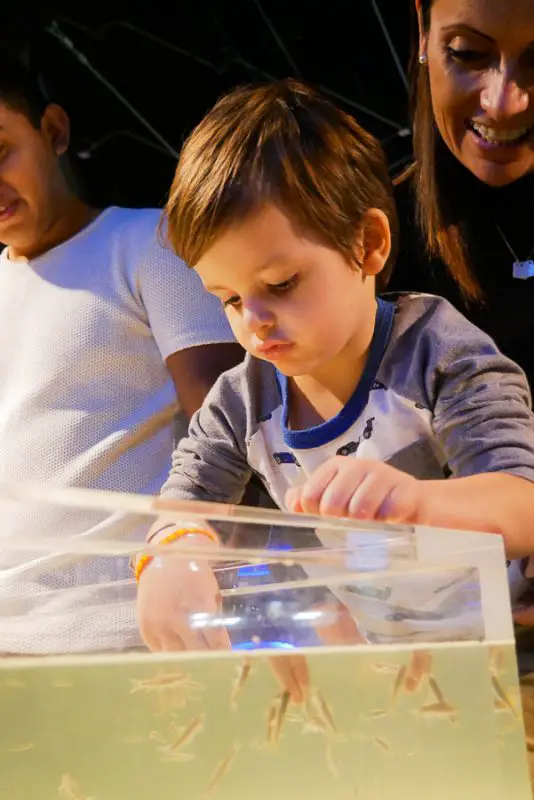

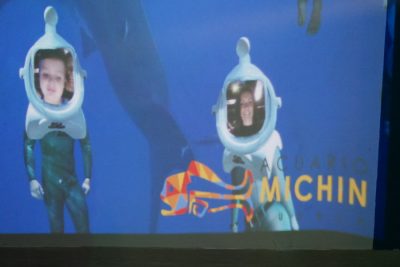



You can easily spend a day here, but I'd limit the visit to a full morning or afternoon as Puebla has so much more to see and do.
Val Quirico
Definitely more of interest to adults, Val Quirico is a representation of what a small Italian village may look like today. Imagine what a clean town with 2 story brick and stone made houses with pedestrian only pebbled streets looks like and you'll probably be spot on.
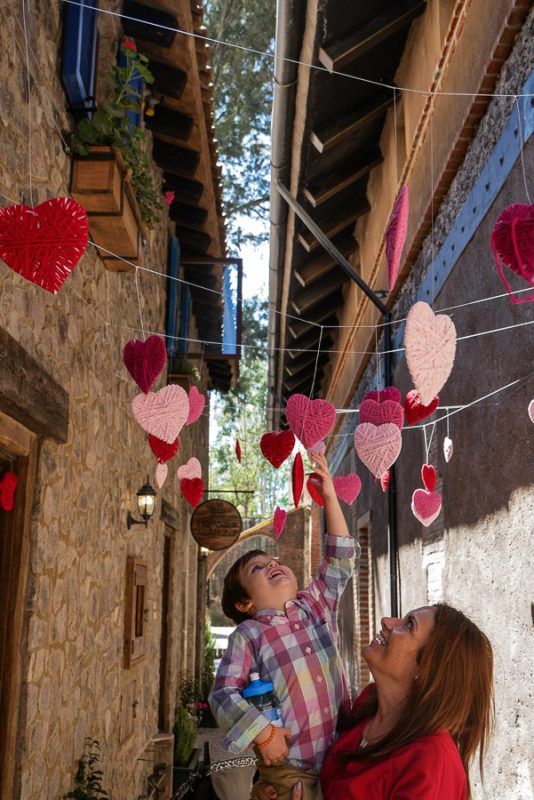

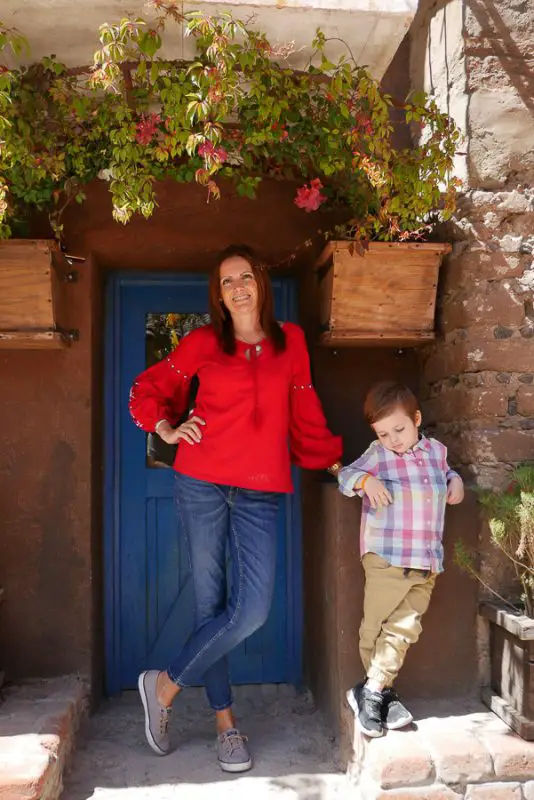

There's not much to do here other than walk around and eat at one of the many fantastic restaurants there are, but it is a pleasant walk and you get to enjoy a quiet and peaceful time.
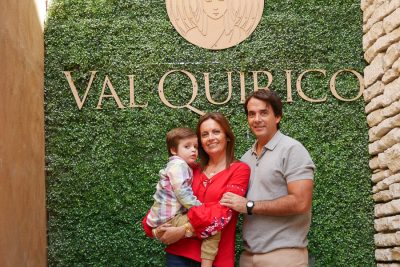

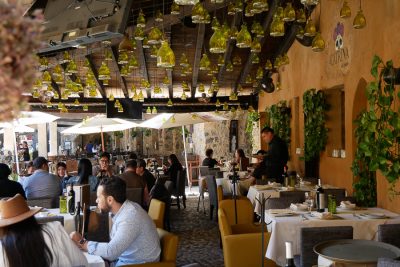

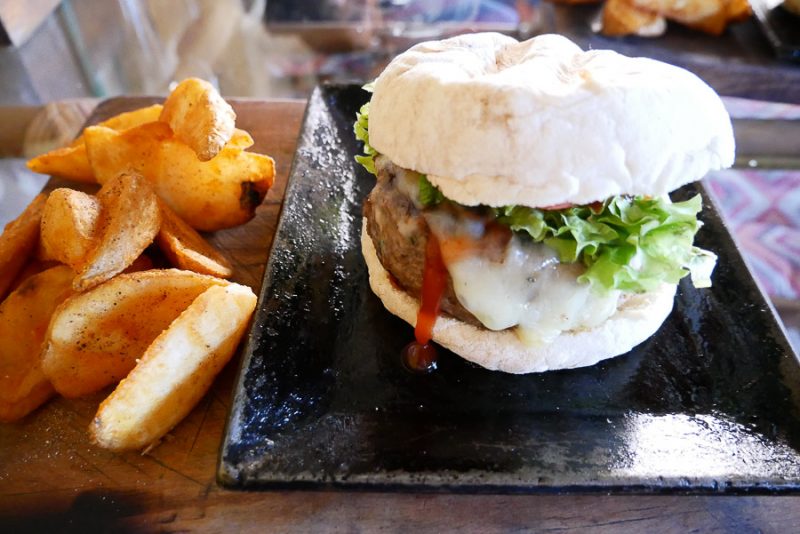

While it may seem like a plain burger, this is actually a bison burger. You won't find many of these in Mexico.
The best way to get to Val Quirico from Puebla is by Uber, which will set you back around 400 MXN, although there are some tours that provide round trip transportation.
Arboterra
Like the aquarium, Arboterra is a fantastic family attraction in Puebla that focuses on wildlife and forest conservation.
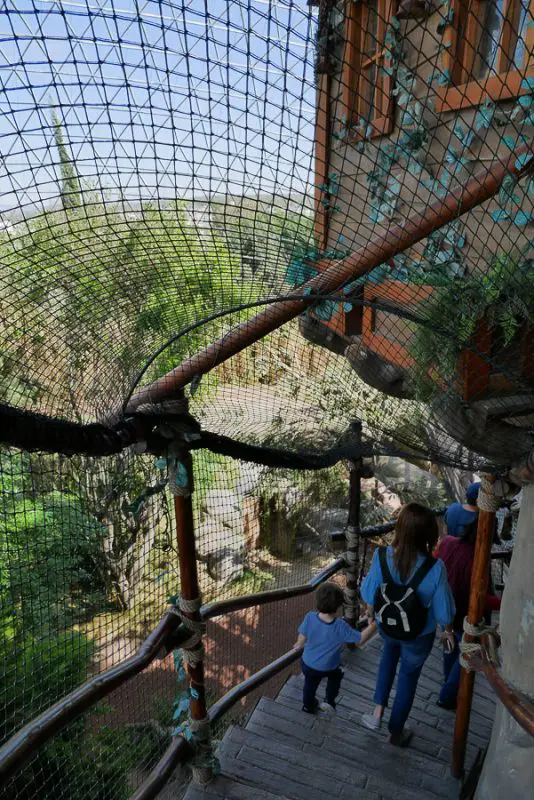

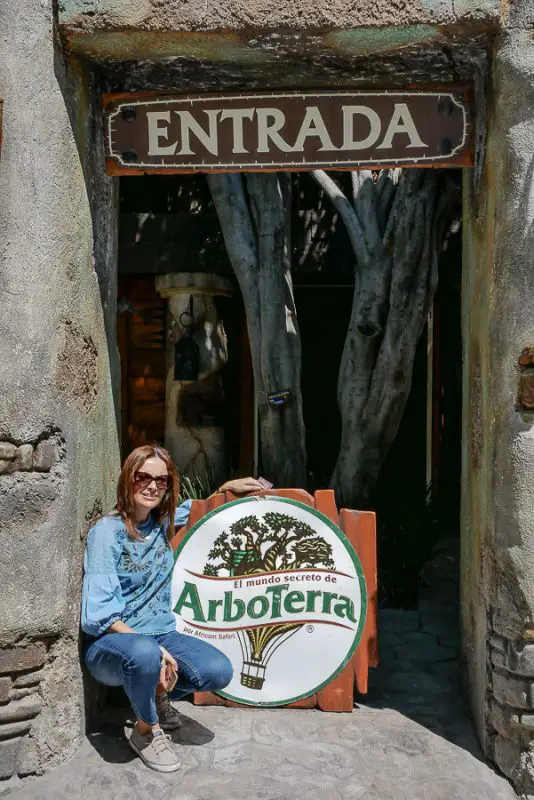

Located within the Parque Ecologico- which in itself is a fantastic park where to let kids run around and play- the entrance costs just 85MXN kids/ 95 MXN adults and includes a guided visit of this simulated tree where kids get to see and learn about birds and other aspects of nature.
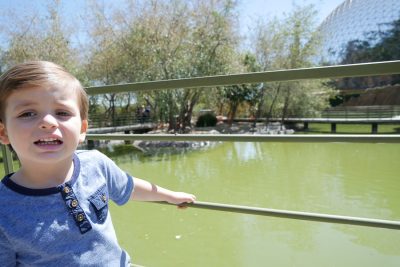

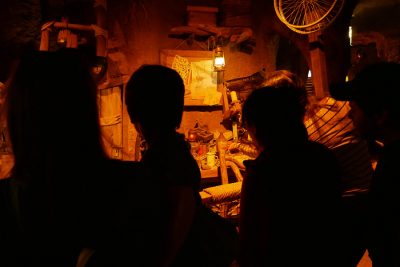

There are some interactive activities as well, and a huge bird cage where everyone will get to see many kinds of birds. Plan on spending around 2-3 hours here, and make sure you stop by if you're going to be in Puebla with kids for a few days.
Food in Puebla
Food was one of the attractions in Puebla I was looking forward to most before starting the trip and should also be one of yours.
The city has some of the best dishes in the country, and is home to two of the most suculent in all Mexico: Chiles en Nogada and Mole Poblano.
We had the chance to eat at several restaurants and while I did have my fair share of mole, I also learned that the chiles en Nogada are a seasonal dish and was completely out of it. Bummer!
Below you will find some restaurants we ate at during our stay, but a food tour is also a great option to sample delicious local food while visiting the city:
This mole cooking class and market tour will take you through some of Puebla's oldest neighborhoods and give you the chance to buy at a local market, and then cook one of Mexico's most famous sauces based on chocolate, chile and many spices: mole. Book here
La Porfiriana, right in the main square, offers traditional Puebla cuisine in an easy going, family friendly environment. One of their main dishes is Mole, of course, which I quickly tried as my first meal in Puebla.
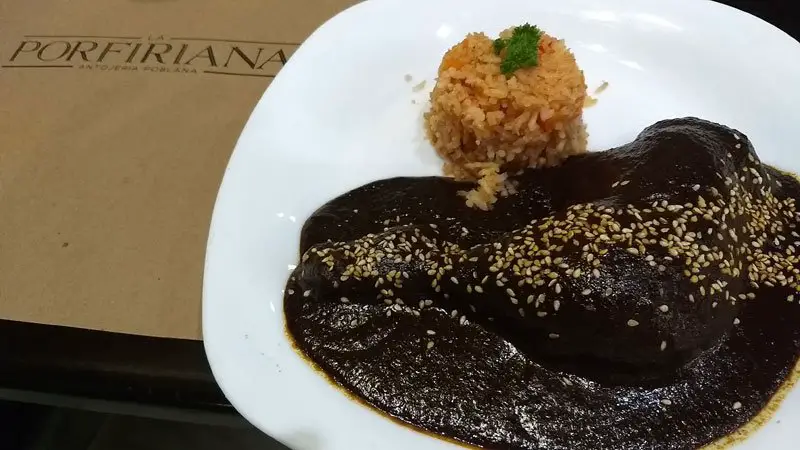




My first meal in Puebla had of course to be Mole, served with chicken.
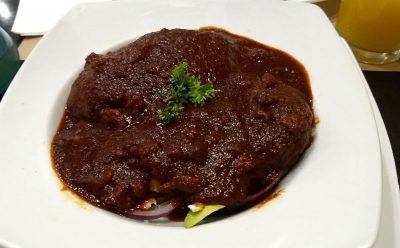




I don't remember the name of this dish, and while it did have a strong flavor it was too spicy for me. Liza was happy with spicy, and she made sure we left nothing behind though 🙂
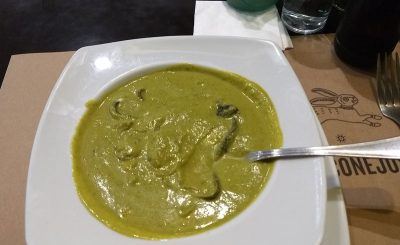




Green tomato soup.
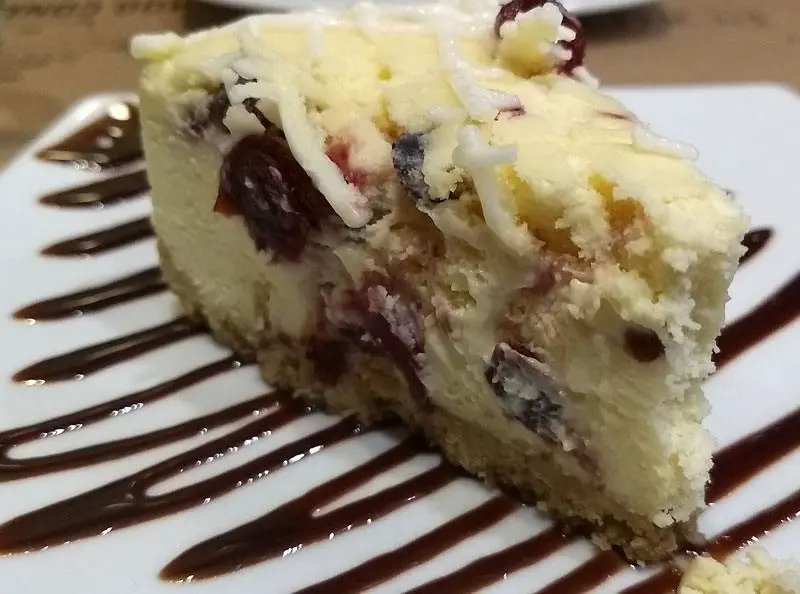




OK, sure, cheese cake is not typical from Puebla, but I have a sweet tooth and saw many people ordering it. It was good!
La Casita Poblana is another great family restaurant in Puebla focused on traditional Puebla food. The venue itself is pretty large, and what makes it ideal for families visiting Puebla with kids is that they have an indoor park where children can have a blast while parents eat.
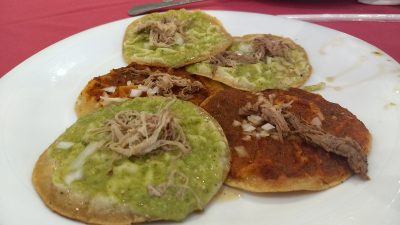




Chalupas, a Puebla specialty
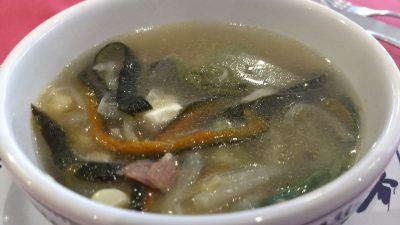




Soup
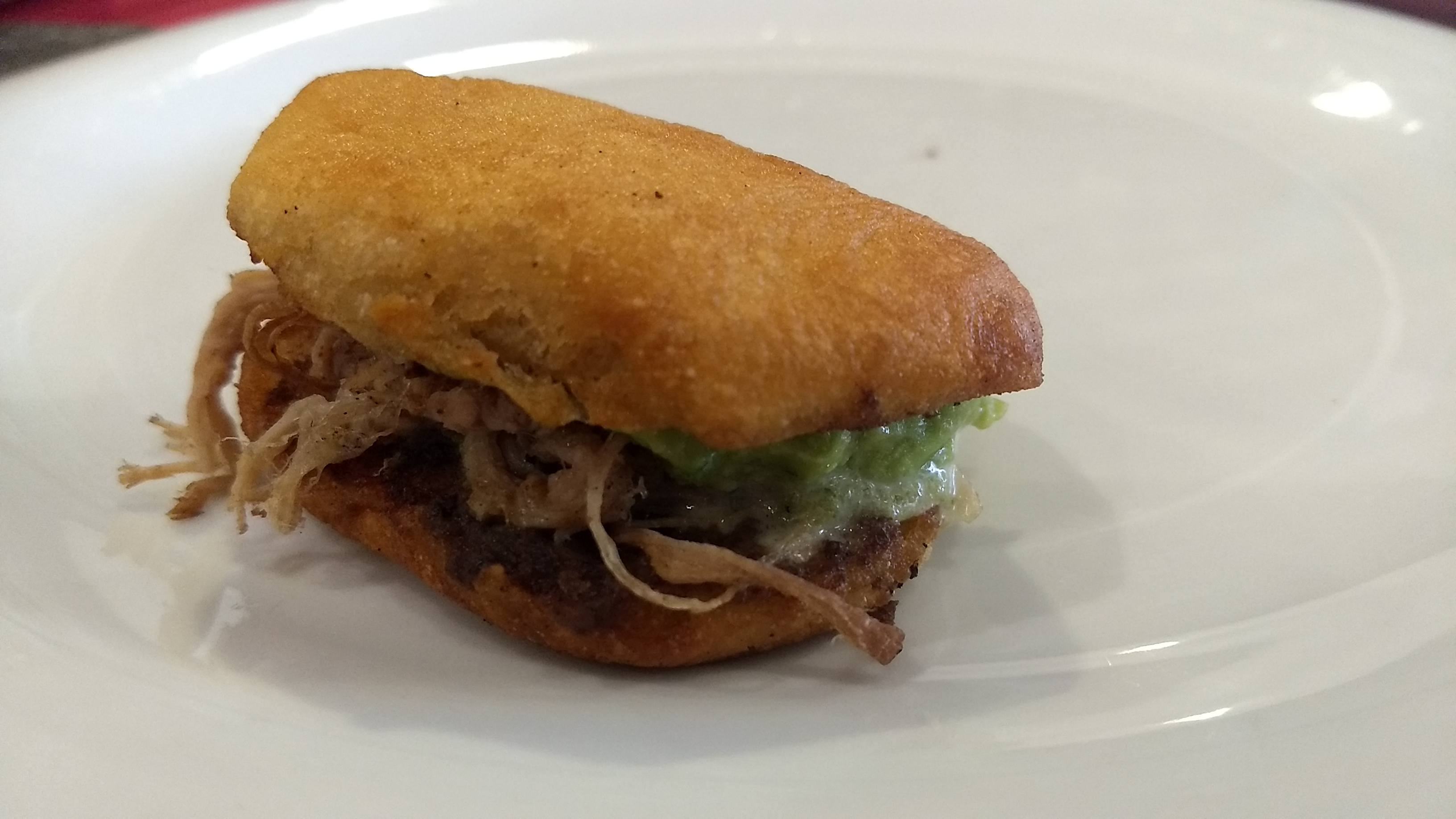




Pambazo





Chicken with mole
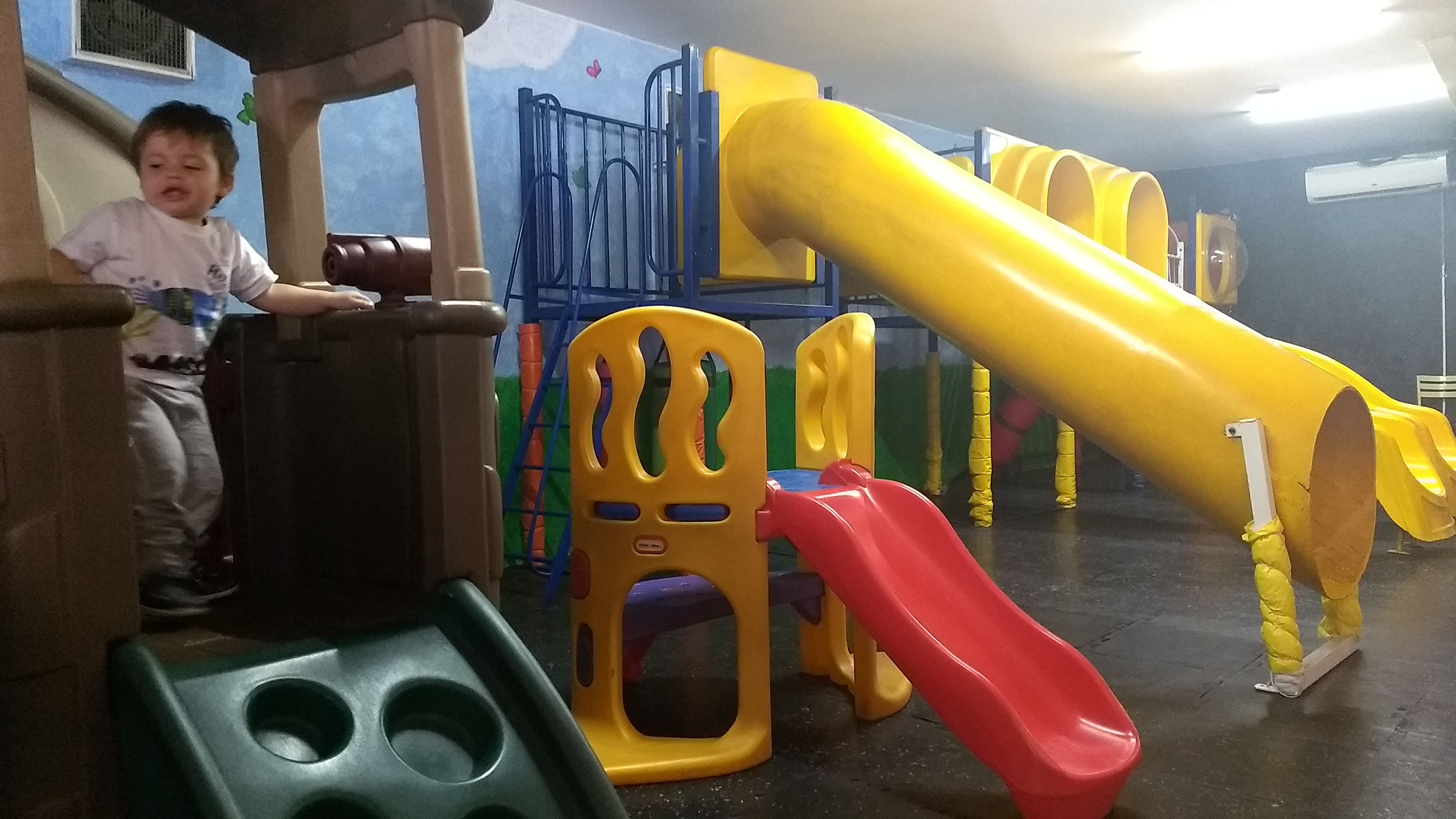




La Casita Poblana has an indoor park for your little ones.
Hotel Marques de Angel in Puebla's zocalo is a new boutique hotel with a fine restaurant that has already built a respected reputation in town. The rooms are tastefully furnished with antique decor, and the food served is simply delicious.
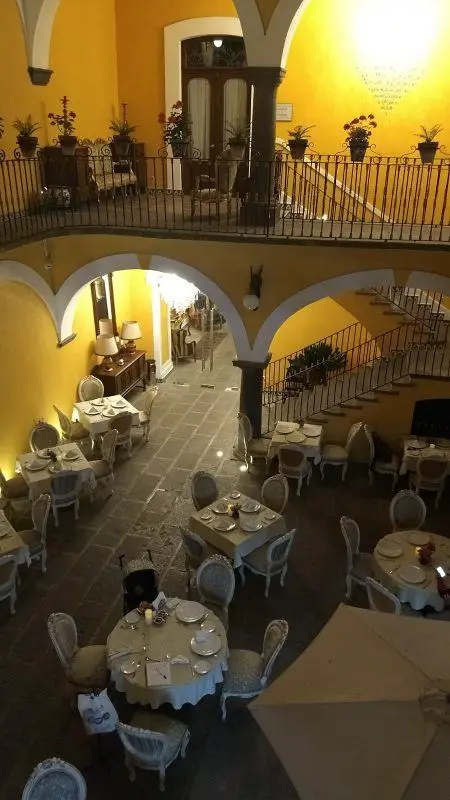




The indoor patio of Hacienda San Angel
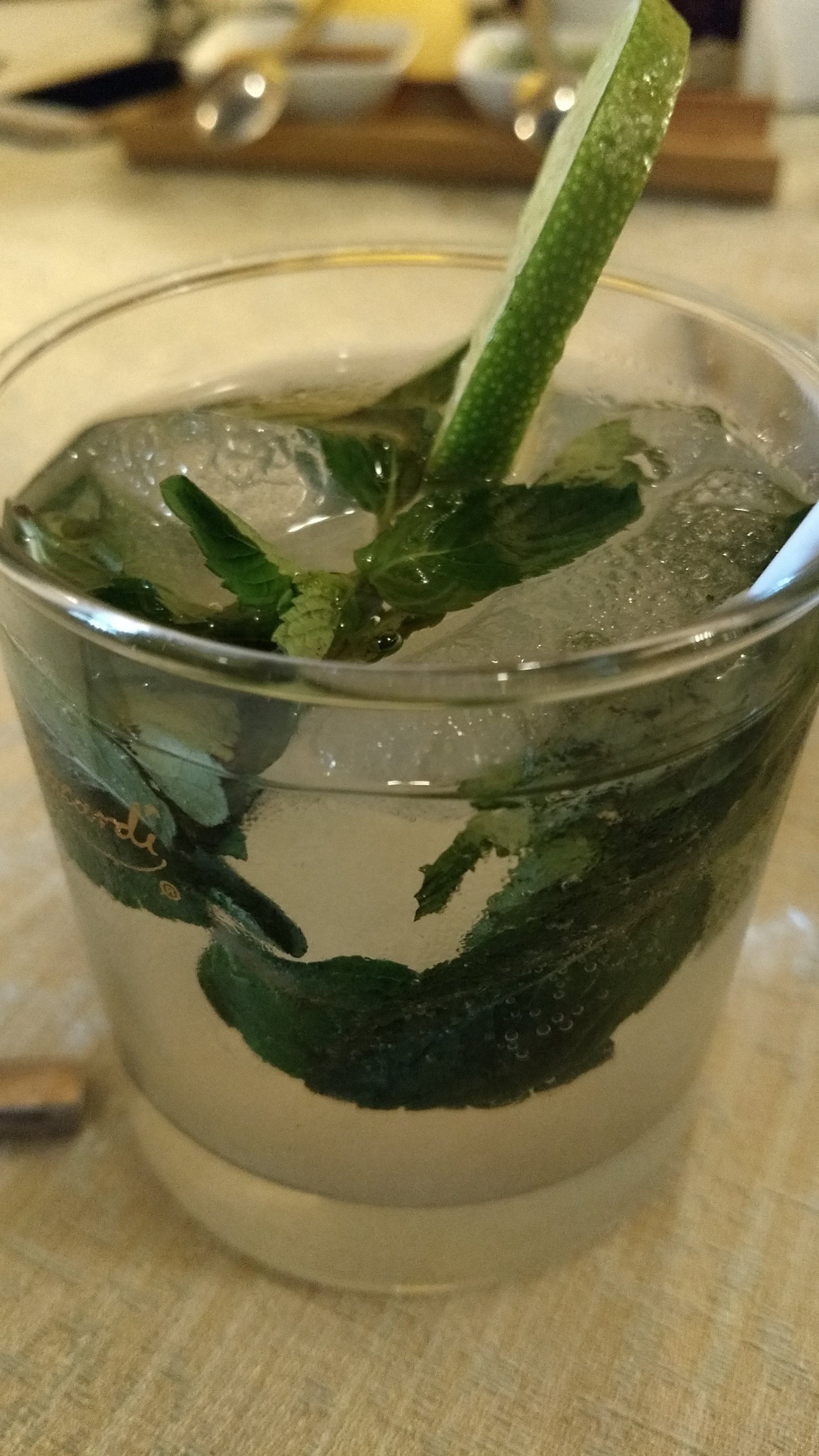




How about a cocktail to start things off?
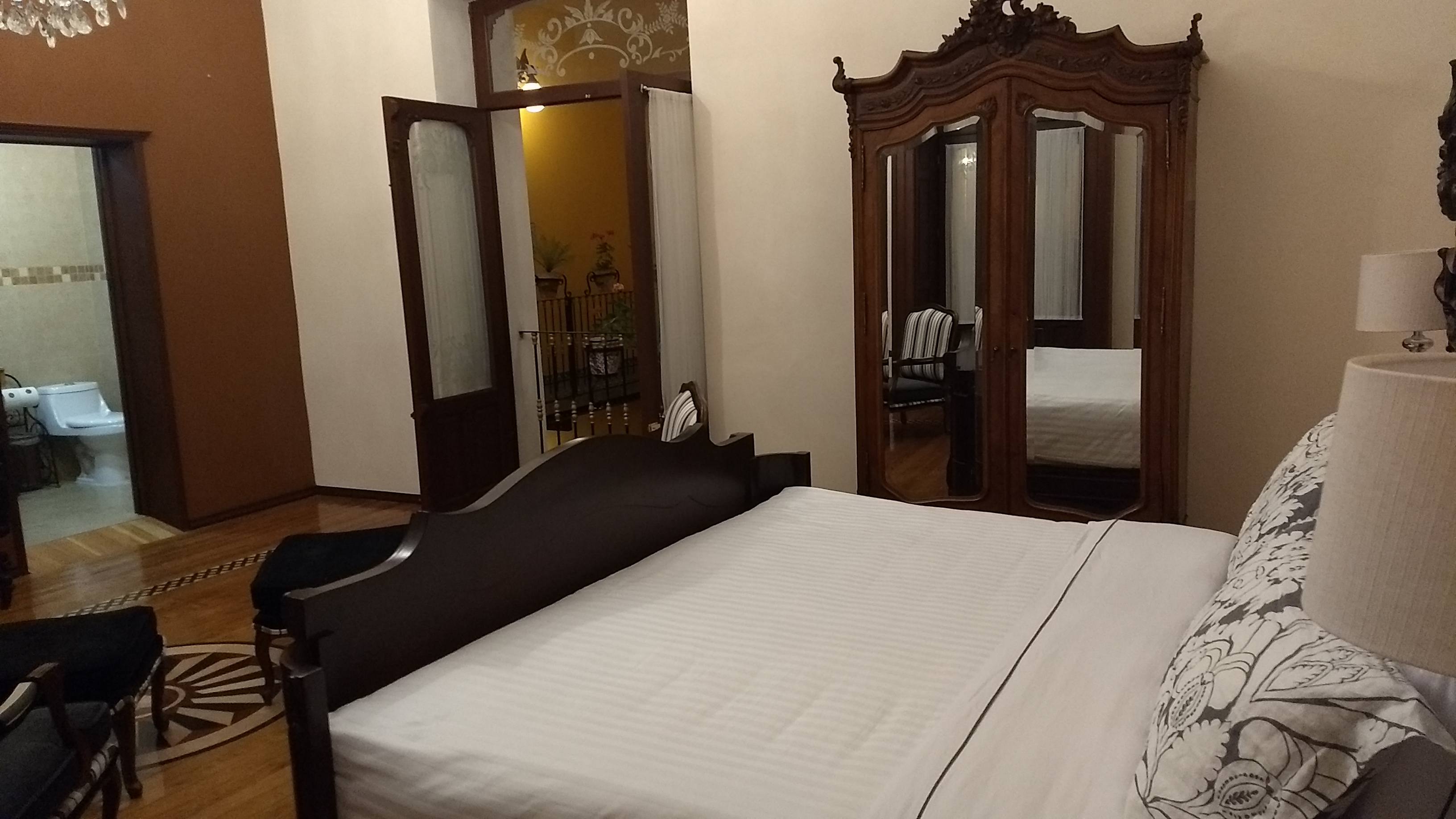




The rooms are a step back in time, with modern comfort.
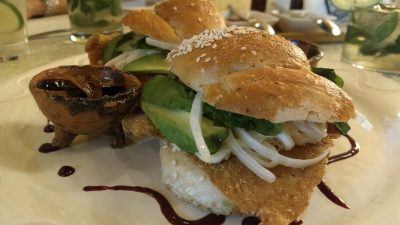




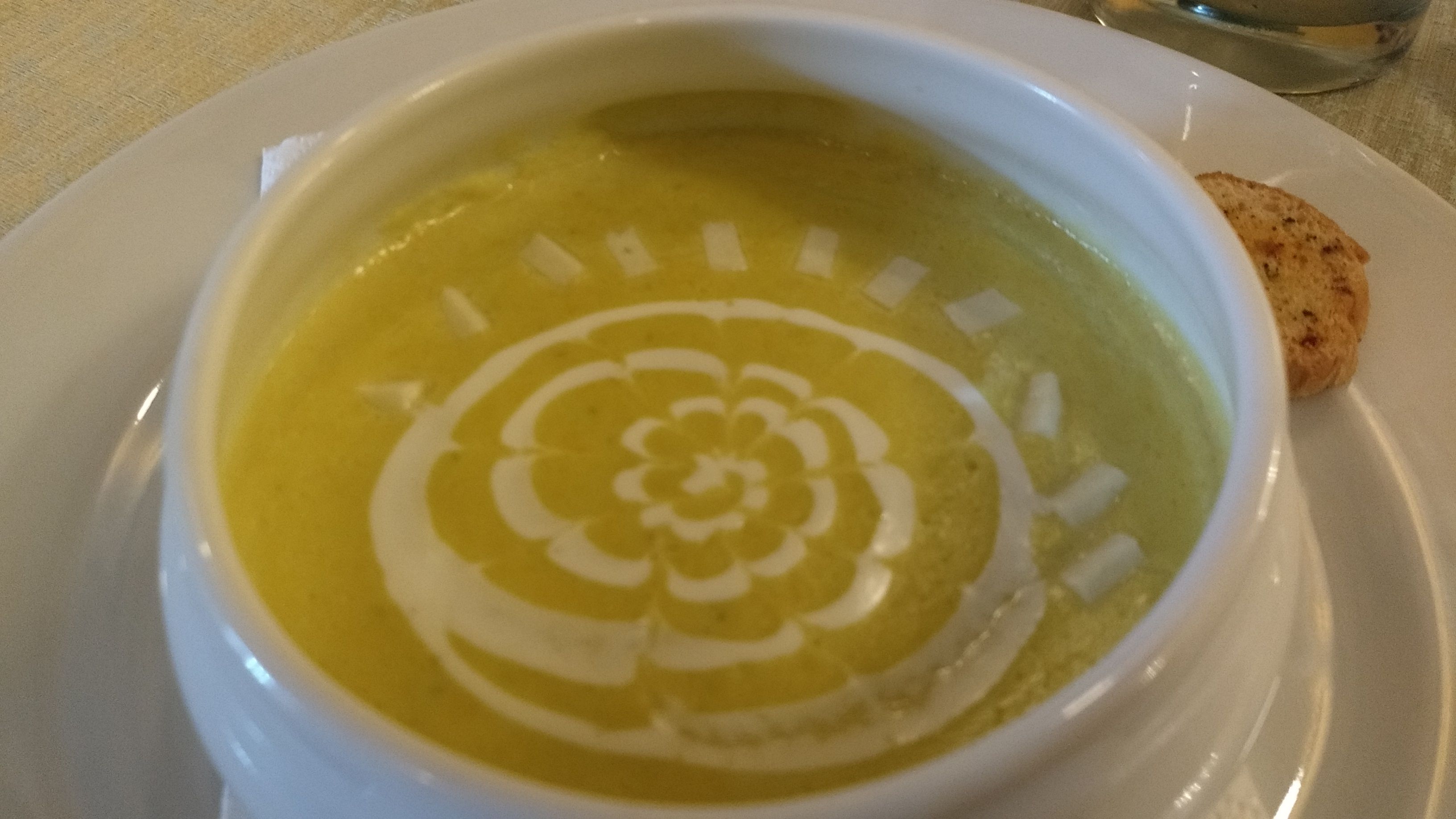




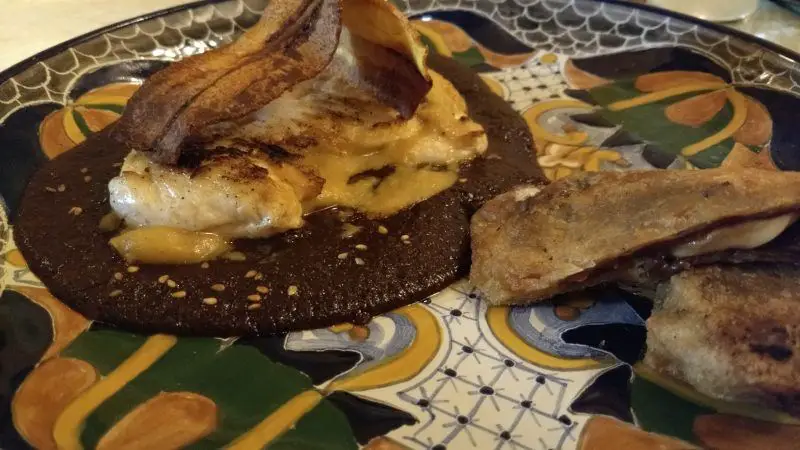




Who's up for some mole?
Where to Stay in Puebla
When visiting Puebla with our toddler we stayed in two different hotels, each in a different location and with quick access to different areas of the city.
Our first couple of nights were spent at the Occidental JF Puebla. Within walking distance of many restaurants and bars should you want to venture out for some food and drinks it has clean, modern mid-size rooms with a desk, working chair, TV, and a full bathroom, though the walls are a bit on the thin side.
The hotel also offers a crib if you're in Puebla with a baby, and there's a good restaurant as well as a fantastic breakfast buffet. Check my full review here.
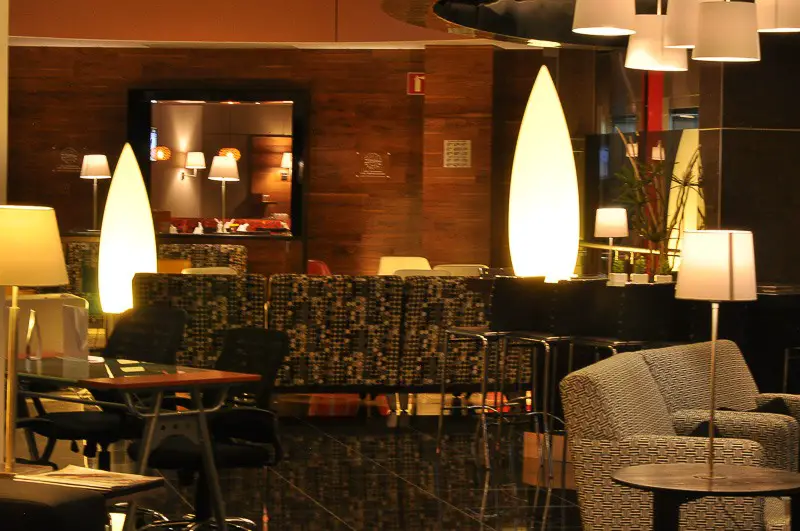




Occidental Puebla Hotel, the lobby
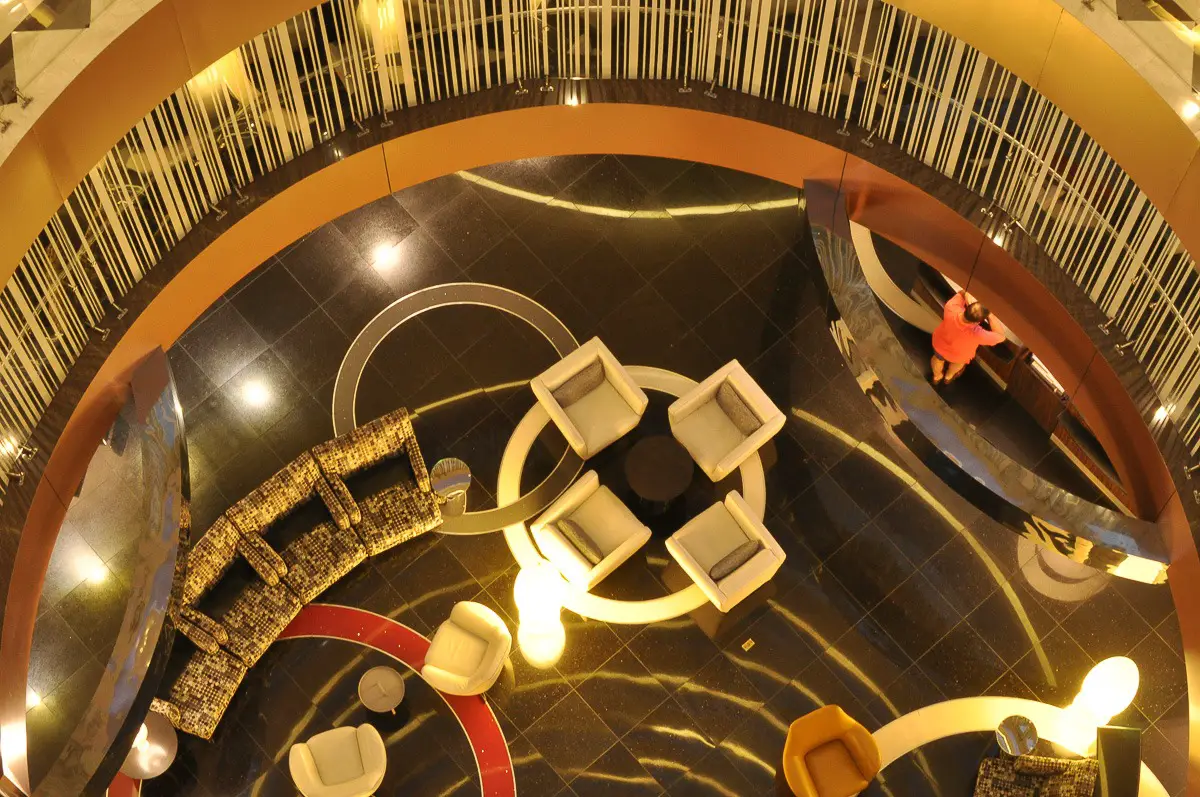




View of the lobby from above.
The last two nights were spent at the Holiday Inn Express & Suites Angeliopolis, in a completely different part of Puebla.
The hotel has a very special view of the city and the Popocatepl, the active volcano just a thirty minute drive from it. It has modern furnishings, offers a good complimentary buffet breakfast and has a some choices for restaurants within waking distance, albeit not many.
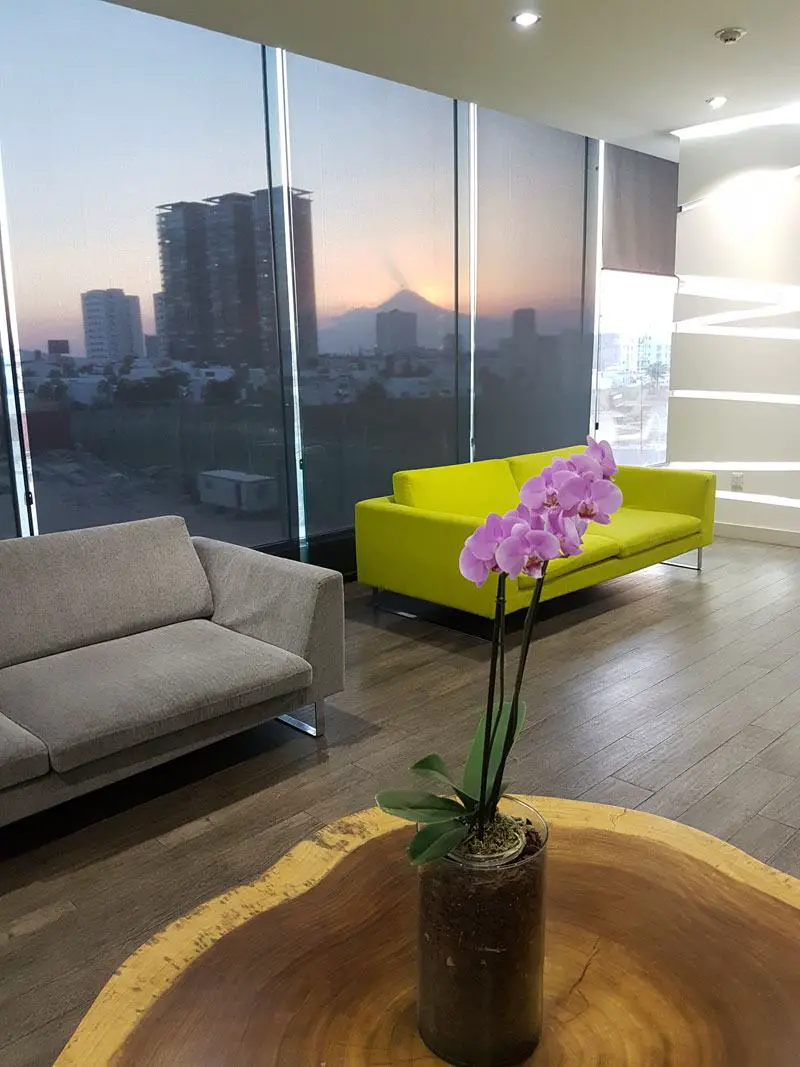




Check out the view from the lobby of the Holiday Inn Angelopolis in Puebla. That's an active volcano you see in the background, the Popocatepl. Pretty unique if you ask me!
More Hotels to Stay in Puebla
We liked Puebla so much that we've recently returned to explore the city a little bit more. We visited new attractions and have these additional hotels to recommend:
Hilton Garden Inn Angelopolis - Also in Angelopolis, this hotel is quite a step up from the Holiday Inn. The rooms have more attention to detail, the building is cozier, and the buffet breakfast is superb too. Read my full review * Check current rate
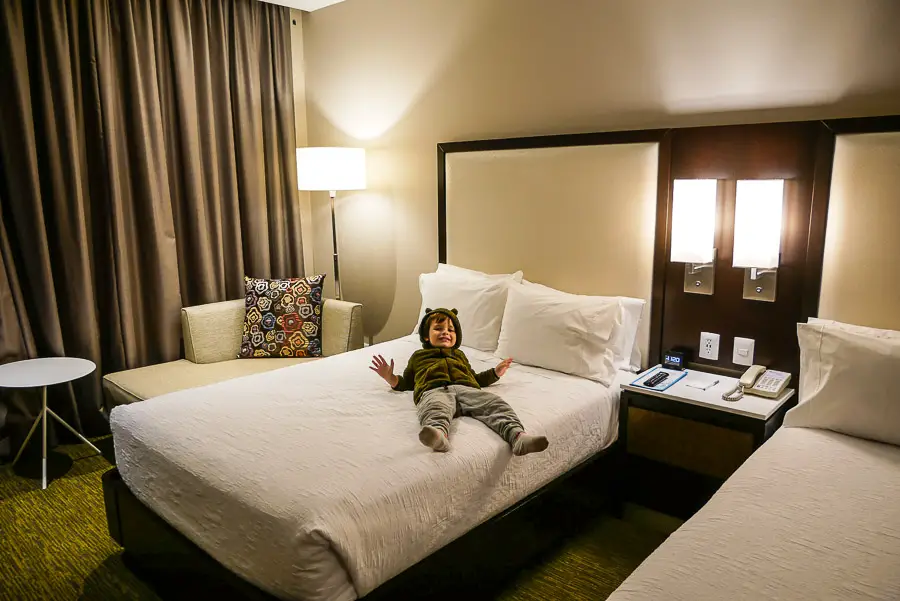



Staybridge Suites Puebla- Right on the city limit with Cholula, Staybridge Suites are a fantastic option if you want an apartment style room with a full kitchen, free buffet breakfast and sports facilities. Oh, and the free shuttle to nearby venues is awesome! Read my full review - Check current rate
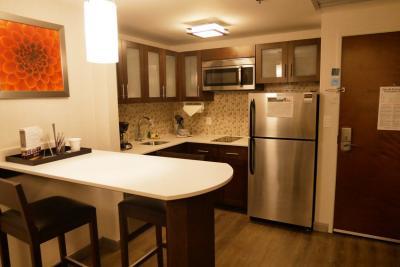


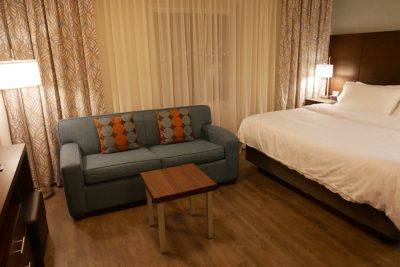


Casona Maria- Just a ten minute walk from Puebla's city center Casona Maria is the ideal retreat for couples and families who not only want to stay in a hotel but want to experience history.
The restaurant is one of the best regarded in town, and the rooms are nothing short of fantastic. Read my full review- Check current price
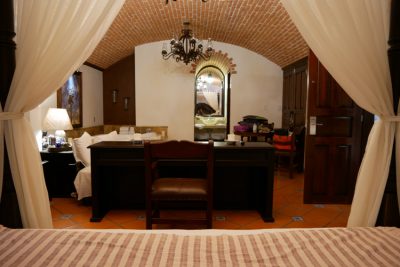

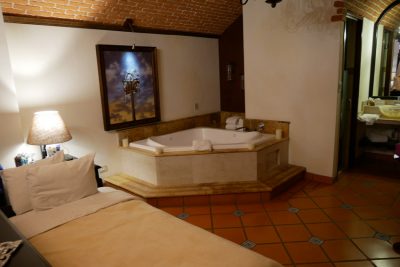

Find Top Hotel Deals
in Puebla


We switched hotels while in Puebla, a strategy that could work for you too if you plan on spending a few days.
Half Day Trip from Puebla: Cholula
When Mexico City’s denizens need a break from the big smoke, they go to Puebla. When Poblanos need to do the same, they go to Cholula.
Once a small rural village, in recent years Cholula has been consumed by Puebla’s unrepentant urban sprawl. Today, Cholula is more of an outlying suburb of the city, but still retains its village vibe.
The village has two significant religious sites, the Templo de Santa María Tonanzintla and nearby Templo de San Francisco de Acatepec.
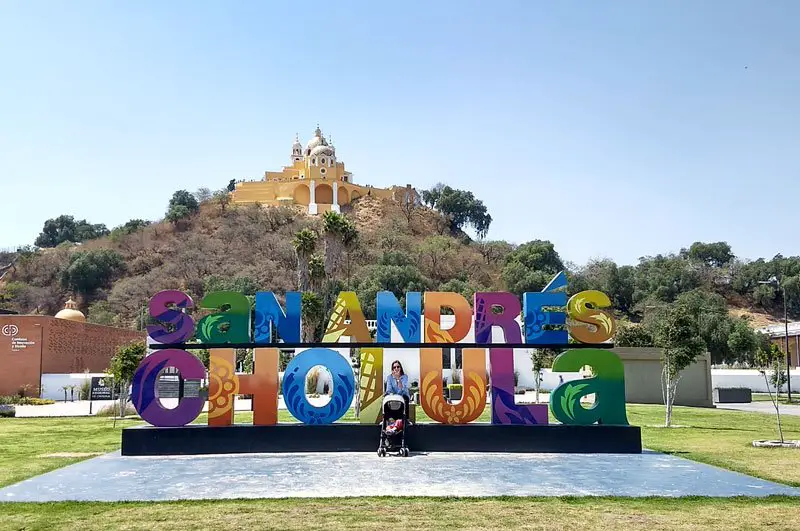




The big draw card here is the Great Pyramid of Cholula. Despite its humble appearance as a grassy hill, this pre-colonial structure is the largest known pyramid anywhere in the world.
Archaeologists estimate the total volume of the Cholula pyramid is around twice that of the Great Pyramid of Giza. Unfortunately, the Cholula pyramid was long neglected, and still remains mostly un-excavated.
Visitors can, however, explore a small section of excavated tunnels that run deep inside the pyramid. You’ll feel like Indiana Jones exploring the dark recesses of the pyramid in a one-way underground tunnel.
While it’ll certainly appeal to the kids, bear in mind this experience isn’t well-suited to anyone who is at all claustrophobic.
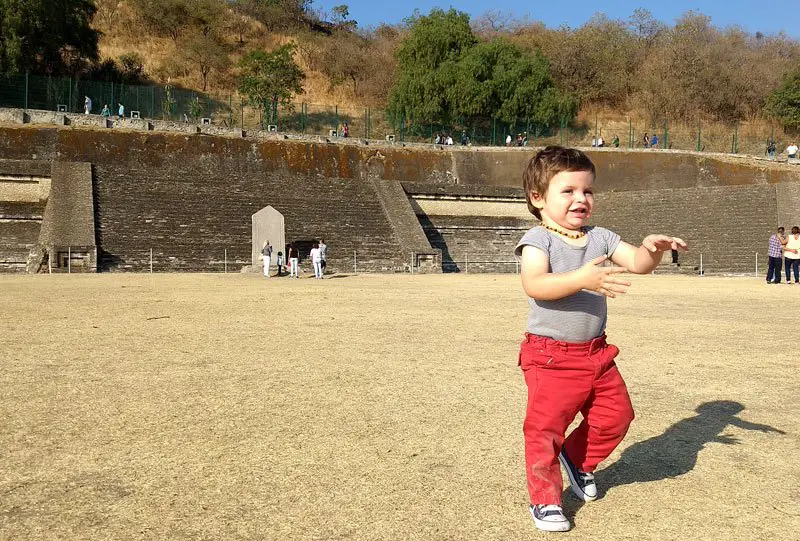




Teo having fun running around the base of the pyramid.
Outside the tunnel, visitors can check out excavated portions of the pyramid, and even climb to the top. To get an idea of how massive this pyramid is, there’s an entire church built on top.
On weekends, the courtyard outside the church is rather lively, but even during the week you can still soak up the great views from the top. On a clear day, you can see the Popocatépetl volcano.
The volcano is almost always active, and if you’re lucky you might catch a plume of steam rising from the crater. To learn more about Cholula and its surroundings, don’t miss the Museo Regional de Cholula. This newly refurnished museum can be found just to the side of the pyramid archaeological zone.
At this point, you have two options. If you’re standing outside the museum and facing away from the pyramid, you can either take a right to a strip of bars, or turn left to return to the center of town.
As a student town, Cholula tends to have more lively nightlife than Puebla, and that strip of bars explodes on Friday nights. If you’re not up for binge drinking though, your best bet is to return to the zocalo, where there’s a good mix of Mexican and international restaurants.
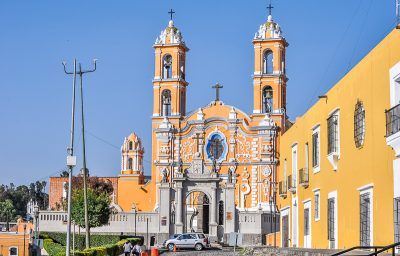




There are a couple of churches in Cholula worth visiting. One of them was damaged during the December 2017 earthquake.
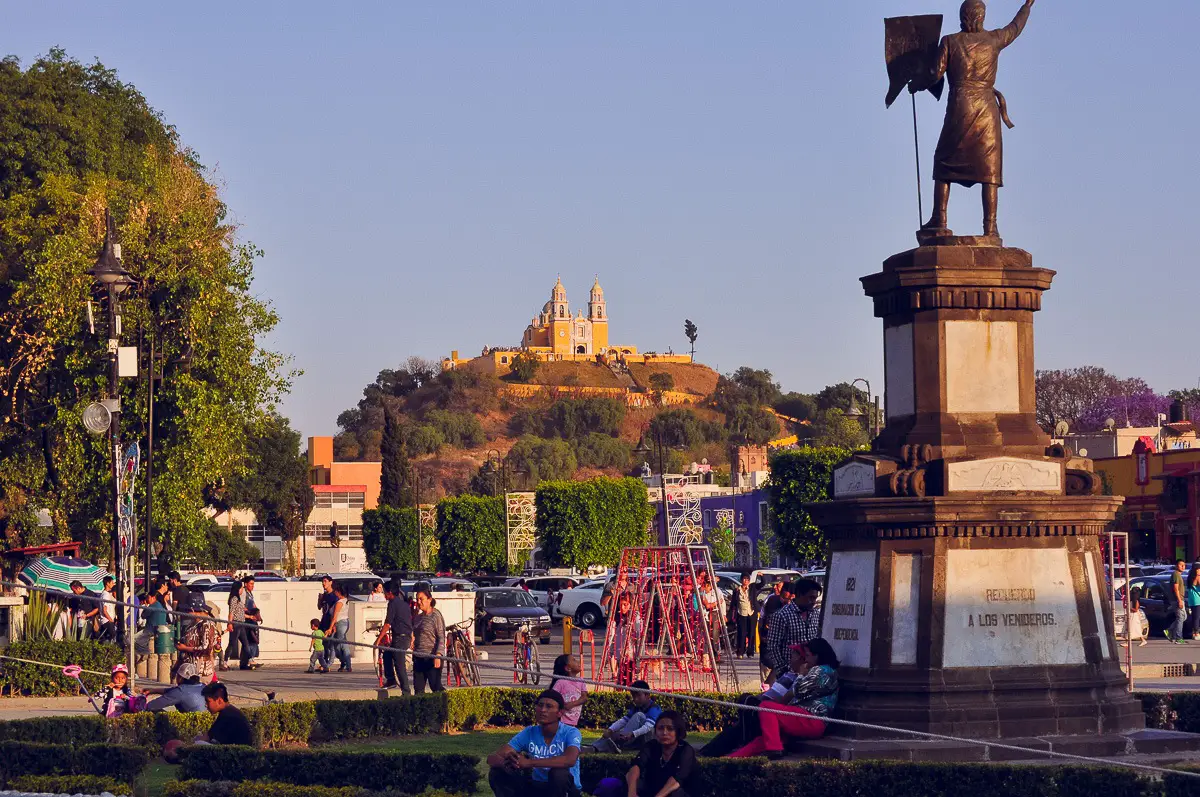




Downtown Cholula. You can see the church at the top of the pyramid in the back.
Overall, you should be able to cover all of Cholula’s main attractions within a few hours, making it a good choice for a half day excursion from Puebla.
To get to Cholula from Puebla, take one of the buses from the small bus terminal on Avenida 6 Poniente, between Calle 11 and 15 (one block north from the Mercado de Sabores).
You can also visit Cholula by joining one of several tours available, of which include transportation:
Where to Eat in Cholula
Cholula has several restaurants where to eat great local food, and just as many if not more simple places where to eat some tacos. We had a superb lunch at Mama Elena, which specializes in traditional meals with a modern twist.
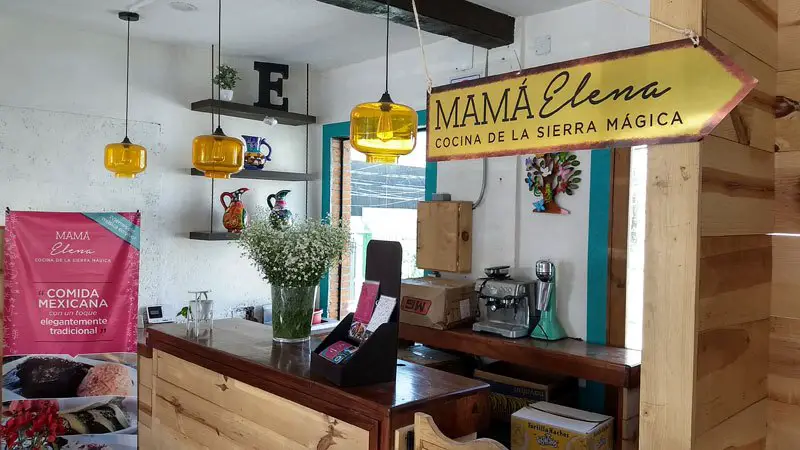




Mama Elena restaurant in Cholula
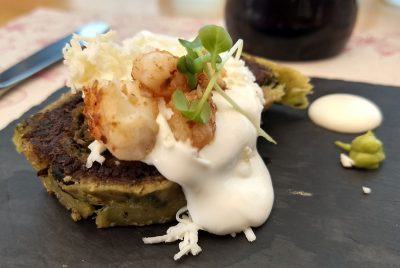




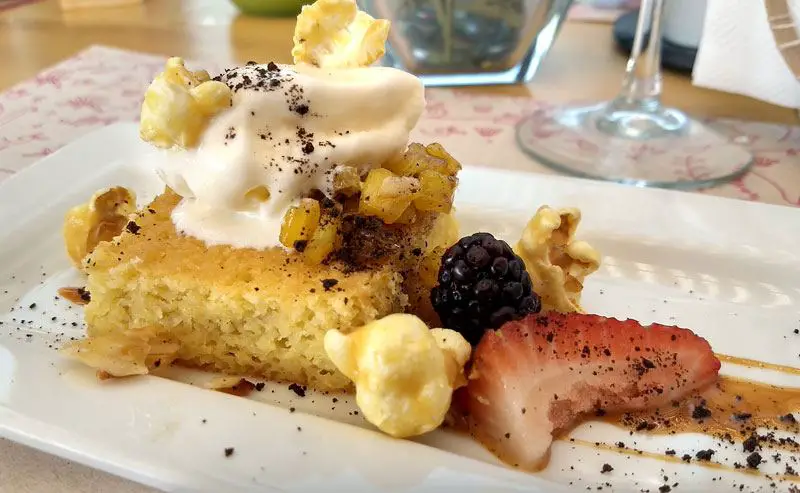




Day Trips from Puebla
While Cholula is best kept as a half day trip, Puebla does have a few other nearby towns worth a full day or overnight adventure.
Atlixco de las Flores
Less than two hours from Puebla, the unassuming town of Atlixco is known for its vibrant culture. It has a few notable sites, including its Moorish-style zocalo, and the nearby La Merced Temple has some interesting stucco facades.
The lemon-yellow San Augustin Church is also worth a peek. However, the big reason to visit Atlixco is to see one of its many wonderful cultural events. In mid-March, the town’s streets are decorated with sprawling carpets of flowers for the annual Festival de la Flor (Flower Festival).
This event celebrates Atlixco’s main industry, which is (you guessed it) the cultivation of flowers. Meat eaters should return in August for the Feria de la Cecina, which celebrates a kind of thinly sliced marinated pork.
Another important festival takes place on January 6, when Atlixco puts on its famous Festival de la Ilusión. Local kids come together to mass launch thousands of balloons.
Again, this is a must for your kids!
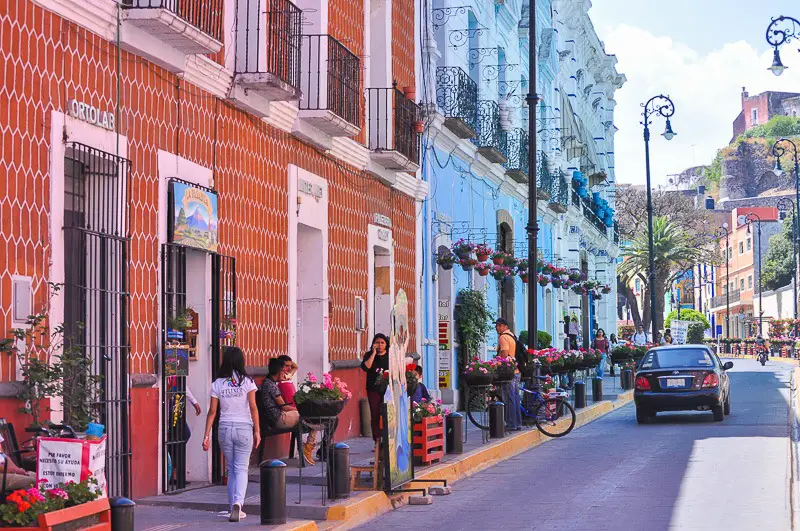




Just a street in Atlixco
If you happen to arrive later in the year though, don’t despair. Over November and January, Atlixco gets lit up by the Festival de la Iluminación.
This festival sees the down decked-out in colorful light displays, along with sky lanterns and carnival rides.
Each year, the festival draws hundreds of thousands of visitors, and Atlixco’s small-town infrastructure buckles under the weight. During this time, expect hotels to be booked to the brim, so plan ahead accordingly.
Atlixco’s most prized festival, however, is the annual Huey Atlixcayotl. Celebrated since pre-Hispanic times in various forms, the modern version of the festival dates back to the mid 1960s.
The festival starts on the last weekend of September, and gives thanks to the god Quetzalcoatl for the year’s harvest. The main event takes place a week later, when hundreds of contestants from all over Puebla state gather to ritualistically climb the Cerro de San Miguel.
The event is livened up by traditional music, along with performances of voladores. The latter is a pre-Hispanic tradition where skilled participants throw themselves from a 30-meter-high pole in a sort of ritual bungee jump.
They then spin in the air, playing musical instruments while wowing audiences with their areal display. If you can, this is without doubt the best time to visit Atlixco.
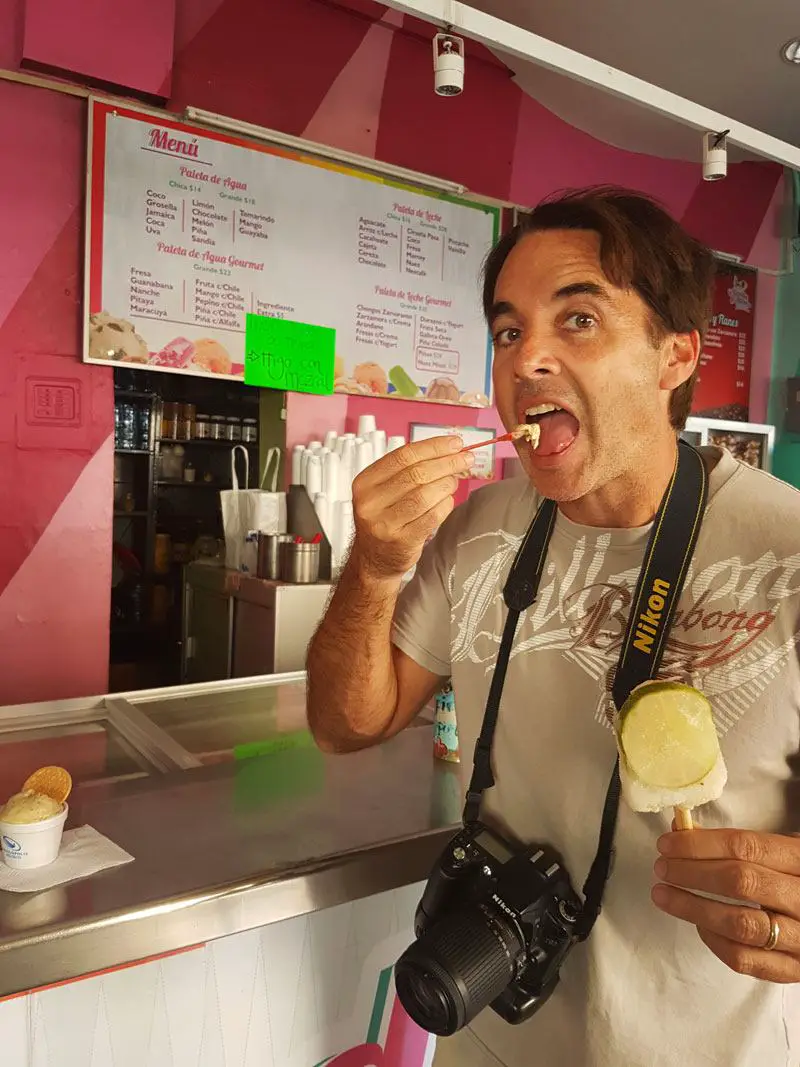




Beer ice cream anyone?
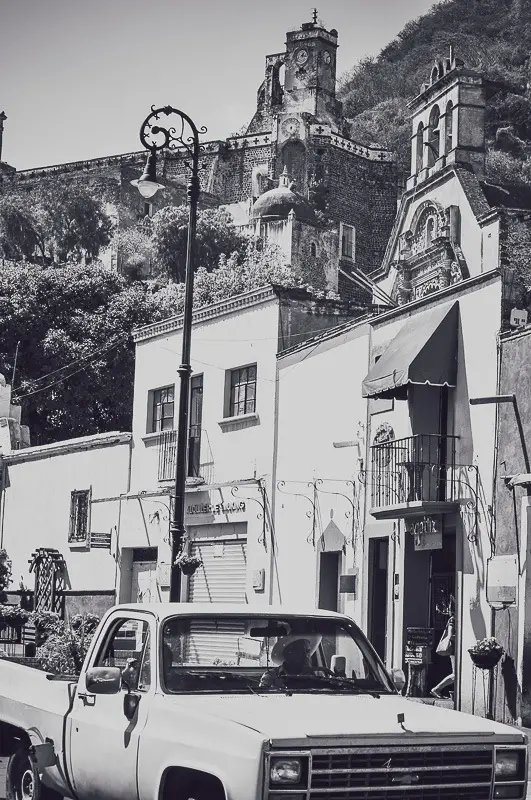




Atlixco de las Flores. I took this picture on March 2018, but it could well be 50 years old.
Outside the festival season, Atlixco is still a pleasant, almost stereotypical Mexican small town. Life here is considerably more relaxed than even Puebla, and an overnight stay can be a welcome respite.
With flowers being the main draw to Atlixco, the Botanical Garden is a must. It has a sample of every kind of plant you can find in Mexico, and then more.
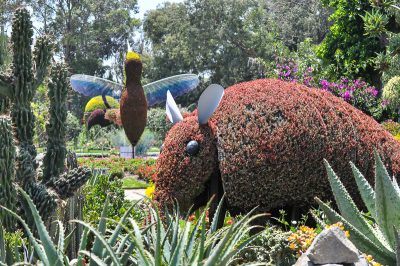




The botanical garden
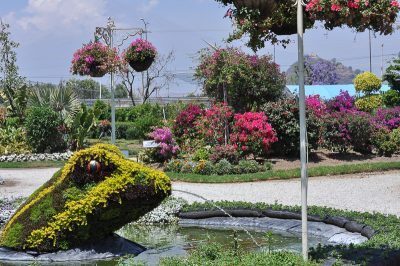




Plant lovers will have a great time here.
Food in Atlxico de las Flores
Foodies will also enjoy exciting local food specialties including cecina Atlixquense-dried, sliced pork meat, ice-cream (with unique flavors I had never seen anywhere including chipotle and beer!), Cemitas Poblanas, Enchiladas and Pambazo Atlixquense, a marinated pork meat sub.
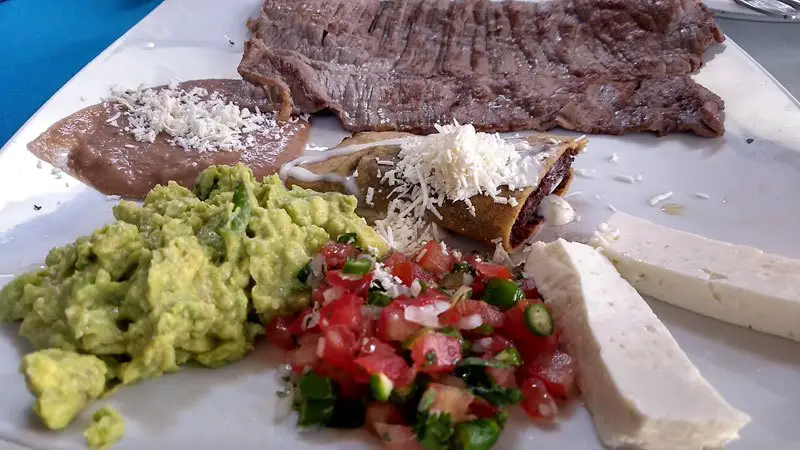




Cecina, the local specialty
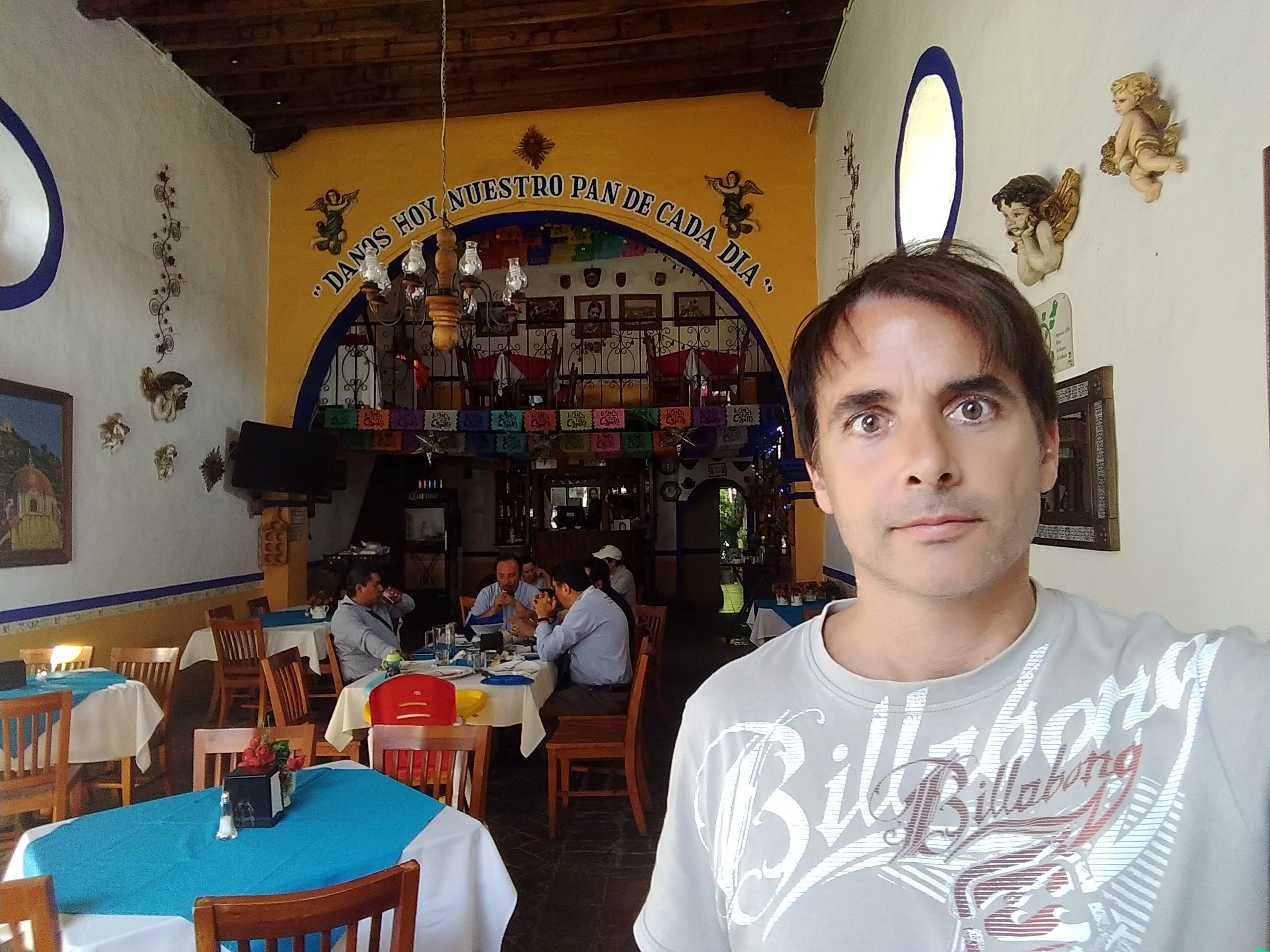




This restaurant is actually a former church.
Getting to Atlixco from Puebla
To get here, just take any of the regular buses from Puebla’s main bus terminal, CAPU. Buses run every hour or so until around 6-8pm. Confirm times at the CAPU though, as bus schedules change from time to time.
Africam Safari
If you’re looking for an easy family outing in Puebla with kids, the Africam Safari is a must. Originally a private collection of exotic animals owned by the wealthy Camacho family, the site was converted into an open-air zoo in 1972. Since then, Africam Safari has been an icon of Puebla state.
Every self-respecting Poblano has visited the zoo at least a few times, and you should, too. From Puebla, the zoo runs tours than include full transport to and from the central zocalo.
To arrange a tour, just head over to the tourism secretariat’s office on the north east corner of Puebla’s zocalo. Africam has a booth inside where you can buy tickets for the park.
On the day of your visit, you’ll need to wait outside the office at the designated time (usually around 10 am), where you’ll be picked up by a tour bus. You’ll know you’ve got the right bus if it’s covered in fiberglass animals.
Be sure to pick a window seat, as this same bus will drive you through the zoo itself.
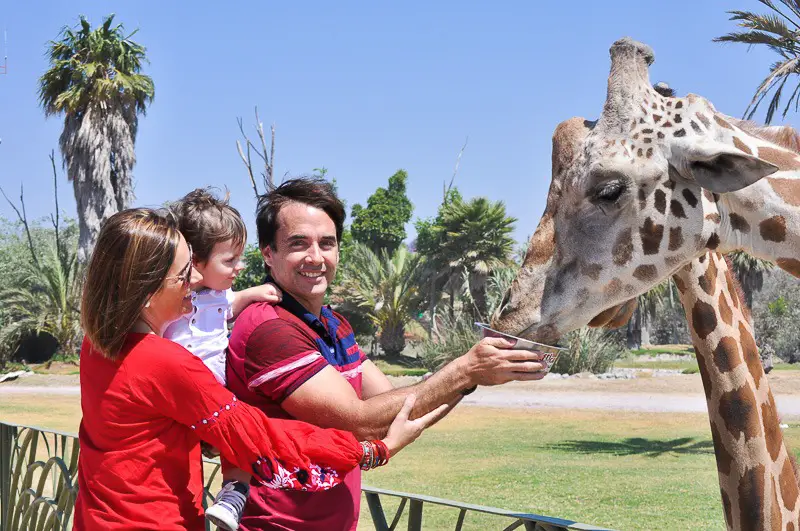




Feeding the giraffes
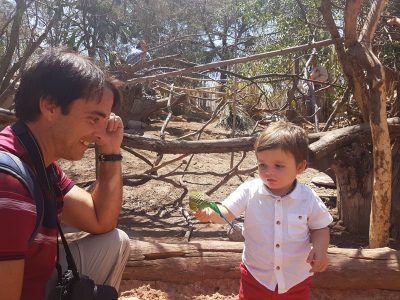




Teo holding a bird that flew to him. Kids will love the safari in Puebla!





Now this is what I call a cool selfie!
On arrival, you’ll find Africam is divided into various zones, each designed to mimic a specific regional environment. In a matter of hours, you’ll be taken on a “safari” across zones imitating African steppe, the Kalahari Desert, Serengeti, Indian forests and Nepalese wildlands.
Each area comes with its own collection of free roaming animals, such as zebra, giraffes, rhinos, dromedaries and more. After the “safari”, visitors are given a few hours in the afternoon to stretch their legs and explore the more conventional part of the zoo, dubbed the “Adventure Zone”.
This area has plenty of standard zoo animals, plus a rather convincing area imitating Amazon rainforest. They also have a butterfly enclosure, bird feeding area, Australian area with kangaroos, a botanic garden of Mexican plants and even a bat cave.
However, on arrival your first priority should be getting front row seats for the daily bird show, which can be quite a thrill. Nocturnal visits are also available.
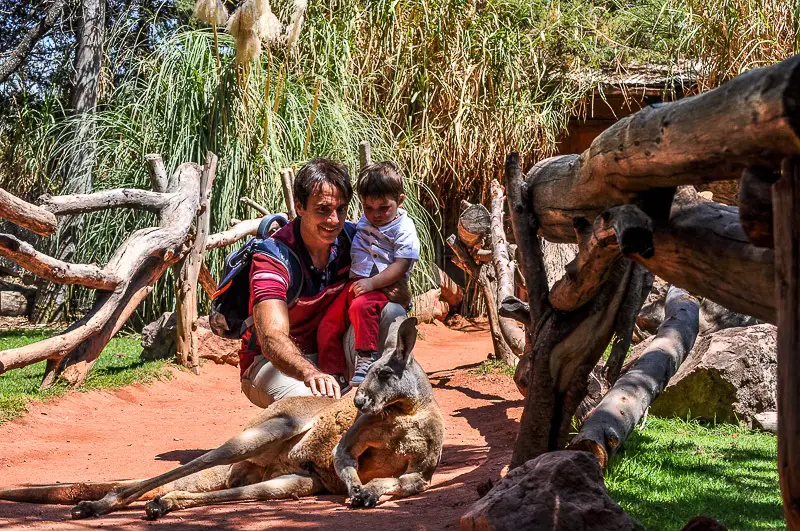




This kangaroo befriended us!
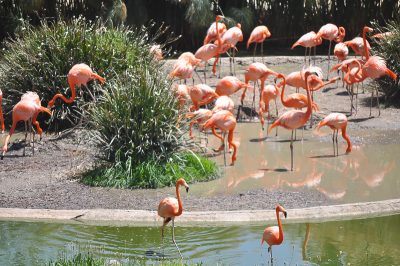




Flamingos
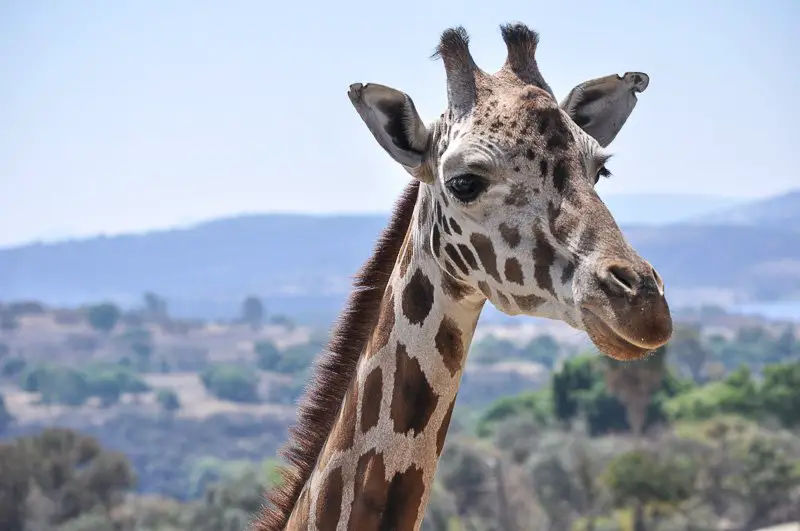




Giraffe





Elephants
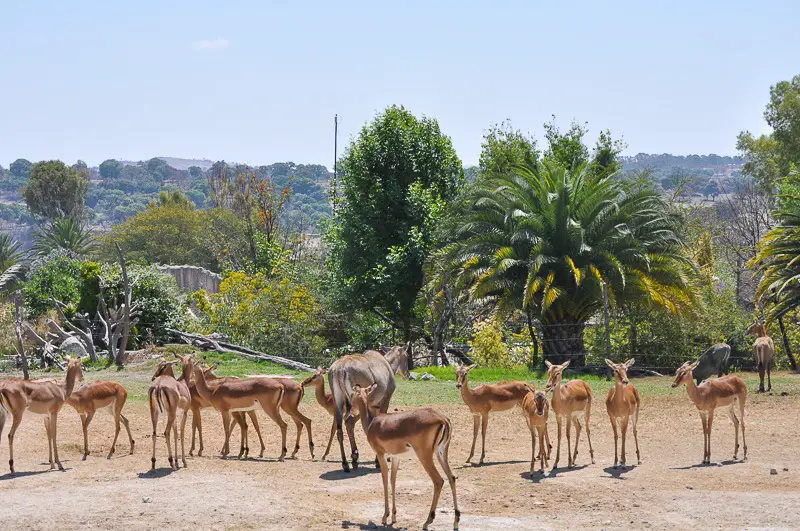




Antilopes
A visit to Africam will consume an entire day, including the round-trip from Puebla. Expect to leave around 10am, and return around 7pm. Like Puebla, the zoo isn’t particularly well-suited to strollers, so bring a sling for the little ones.
Also, remember to stock up on snacks before leaving. While there is an on-site restaurant at the Adventure Area, there are no pit stops until lunchtime.
Getting to Puebla and Away
As one of Mexico’s early important colonial settlements, Puebla began its history as a caravan stop between Mexico City and the coast. Perhaps as a legacy of that time,
Puebla remains well-connected to both the nation’s capital and other main tourist destinations.
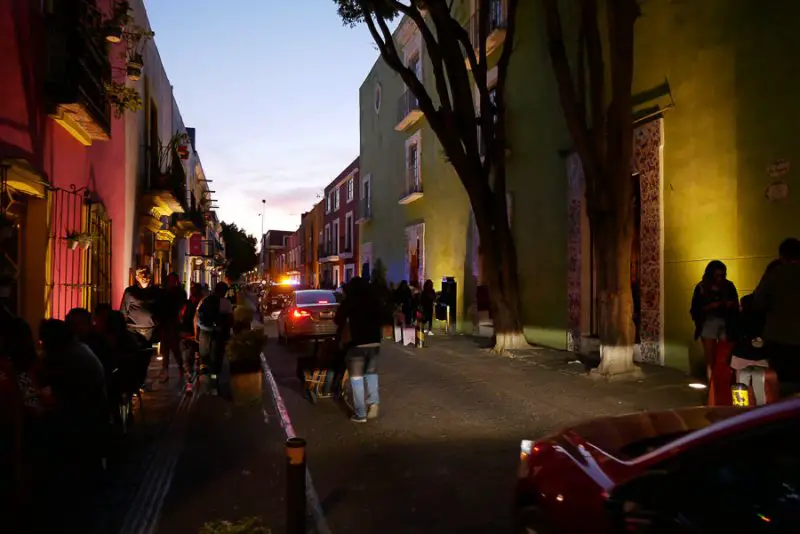

Mexico City’s southern bus terminal, TAPO has regular departures to Puebla from early morning until around 9pm. Estrella Roja and ADO have departures hourly (or more), with most arriving at Puebla’s main terminal, CAPU.
From CAPU, you can either take a municipal bus to the center from just outside the terminal, or fork out for a secure taxi from inside.
Either way, bear in mind that Estrella Roja’s first class buses go directly to a smaller terminal on 4 Poniente, just outside Puebla’s colonial center. From that terminal, it’s about a 15 minute walk to the zocalo.
ADO and Estrella Roja also run hourly buses between Puebla and Mexico City’s Benito Juarez International Airport. Like other first class buses, they depart from and arrive at the Estrella Roja terminal on 4 Poniente.
Finally, Puebla does have its own airport. Located about an hour outside of the city, the Hermanos Serdán International Airport has connections with Guadalajara, Monterrey, Dallas, Houston, Cancun, Tijuana and more.
Our fantastic trip to Puebla was possible thanks to the support provided by the tourism office of Puebla which you can find at www.puebla.travel . Make sure you reach out to them if you need tips on what to see and do in Puebla with kids- or without them!
